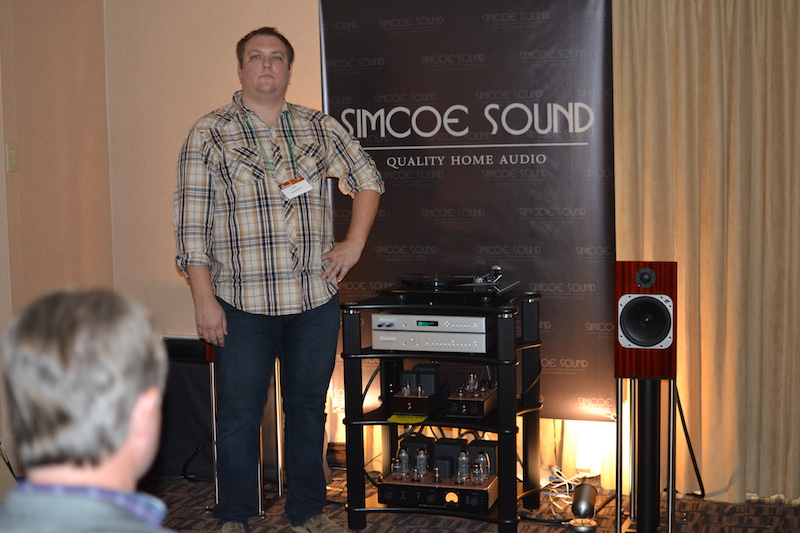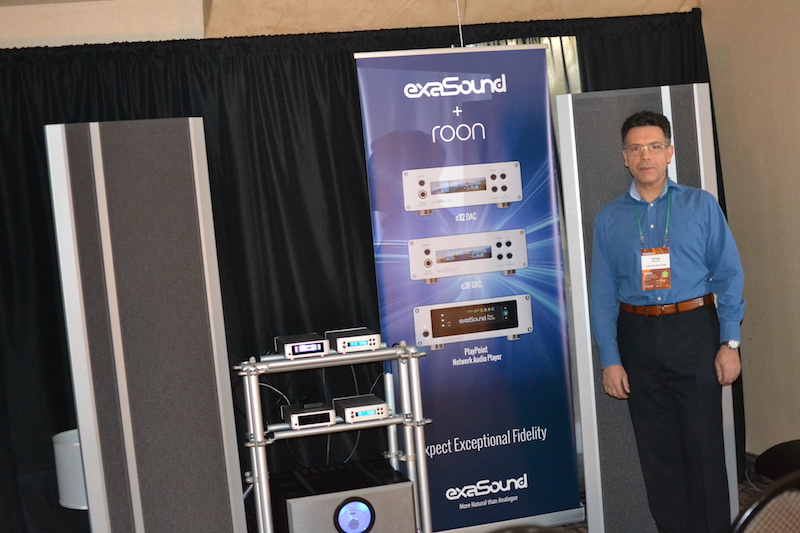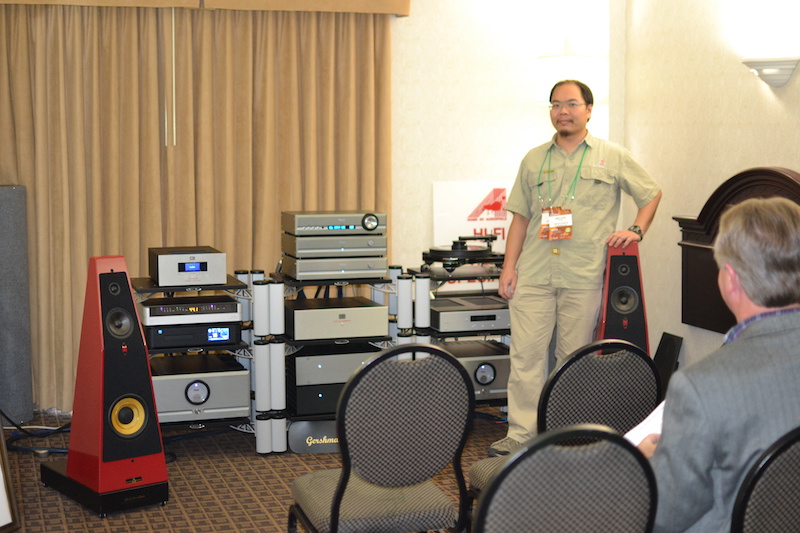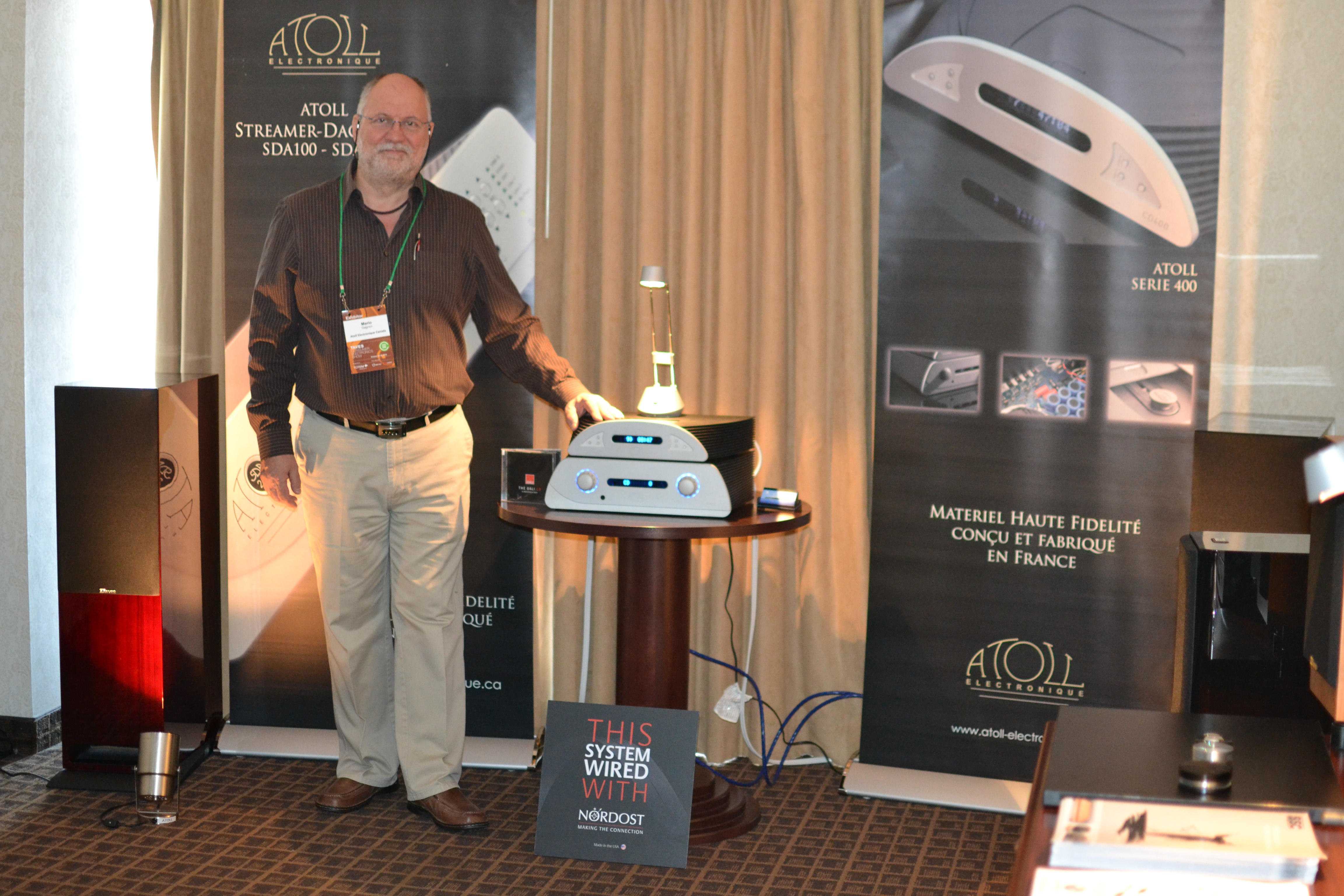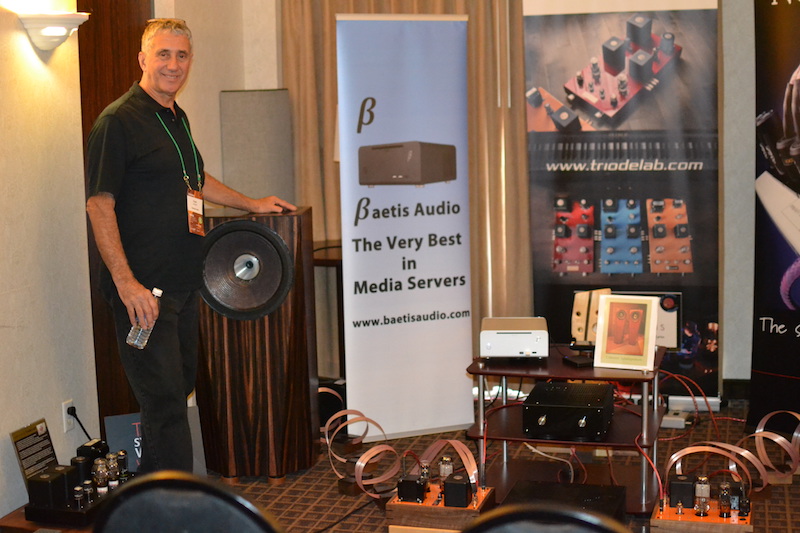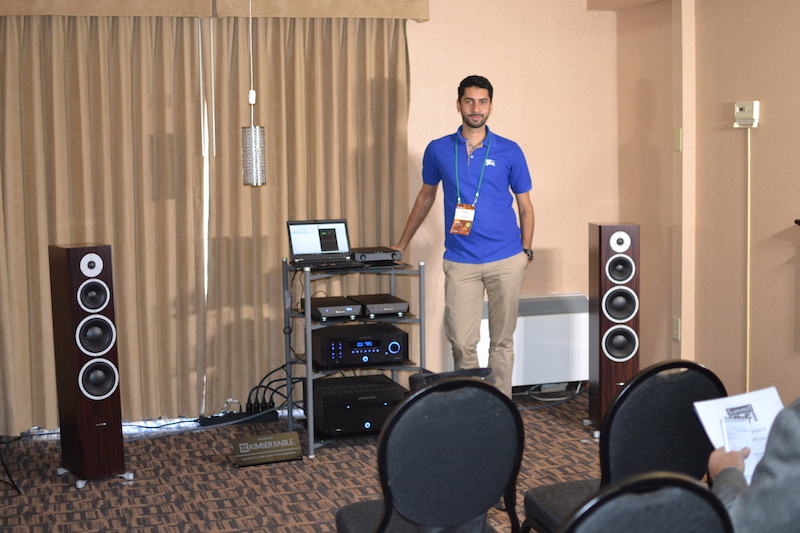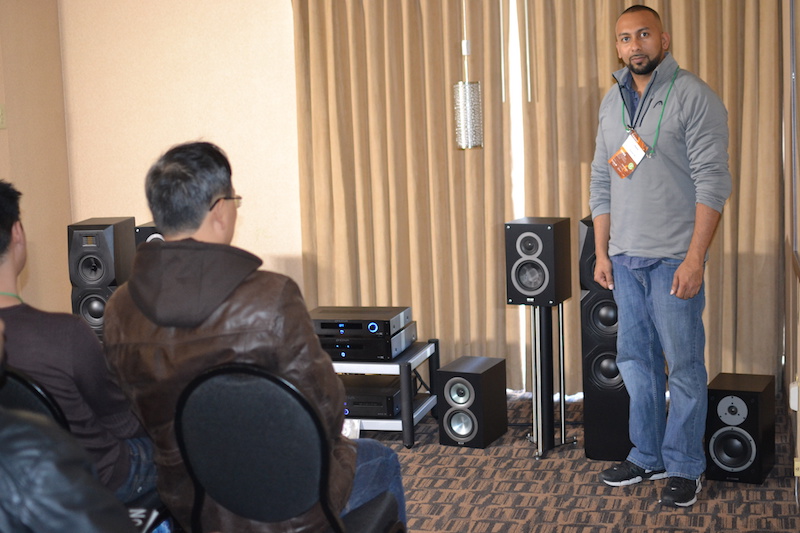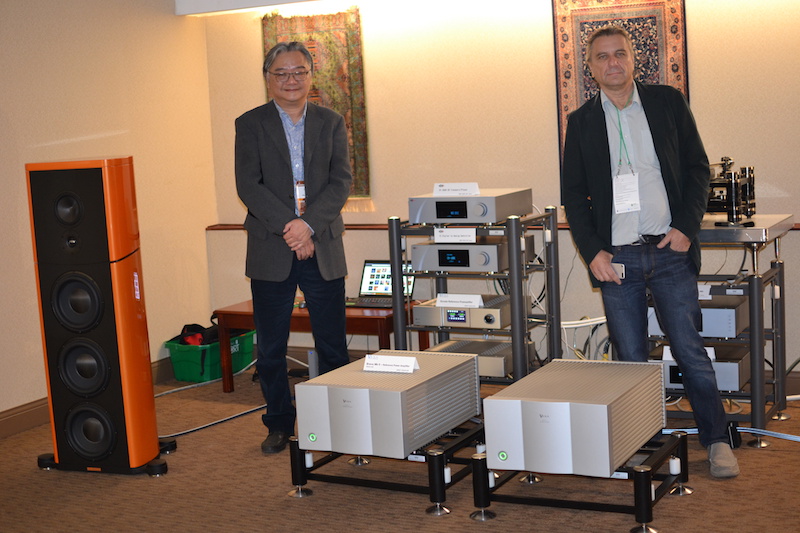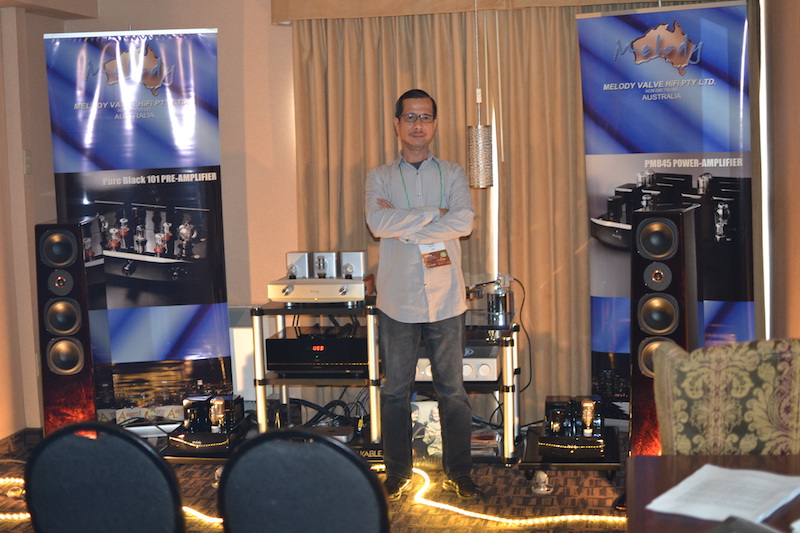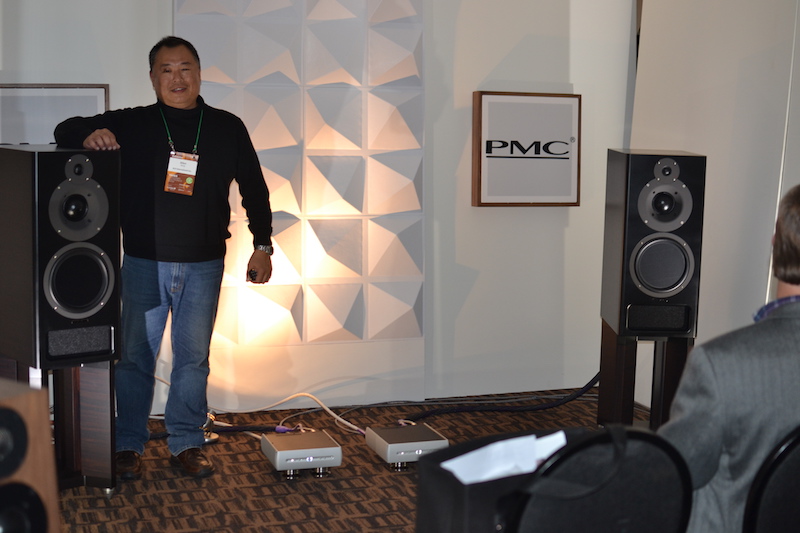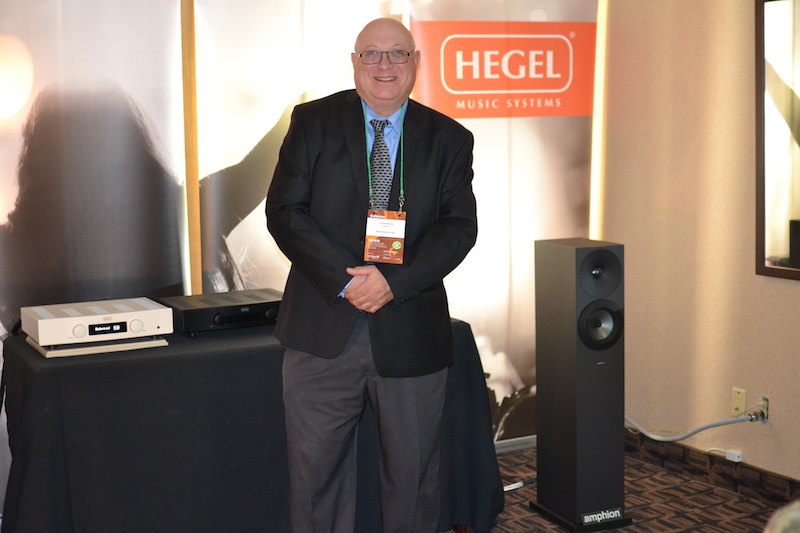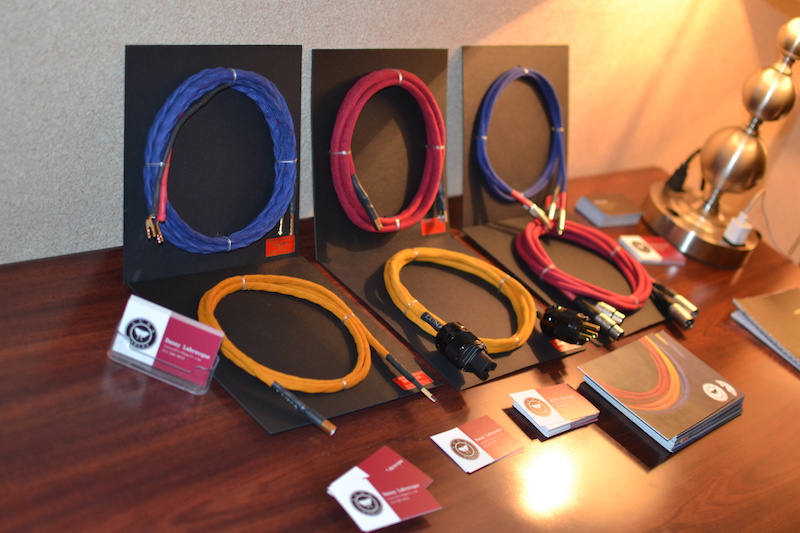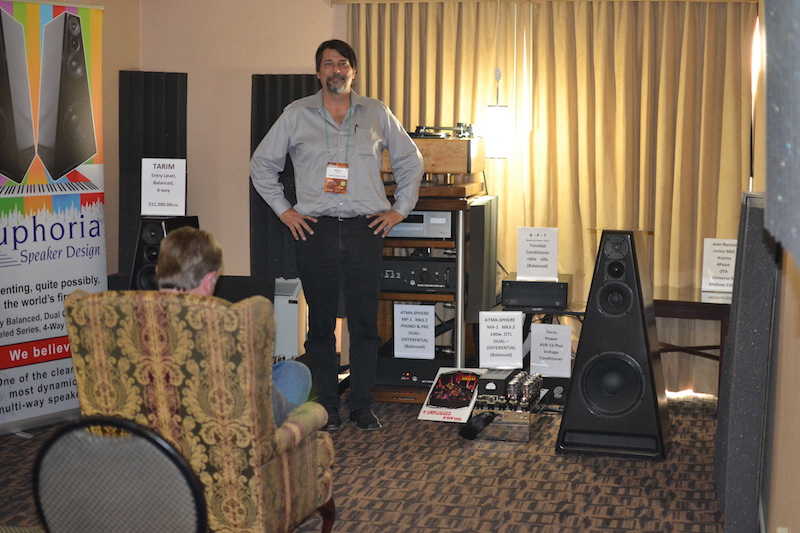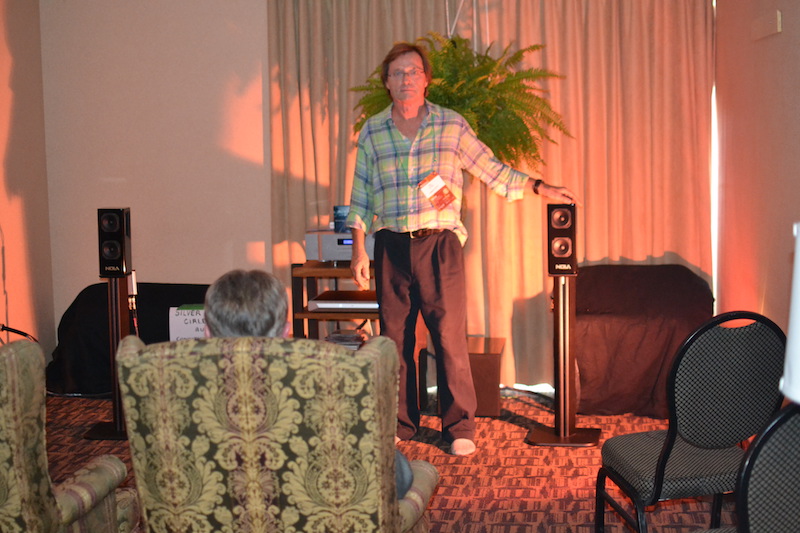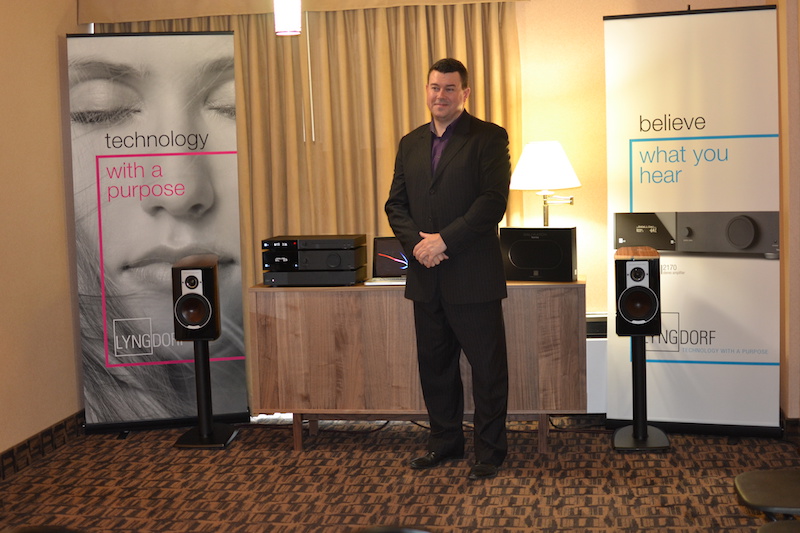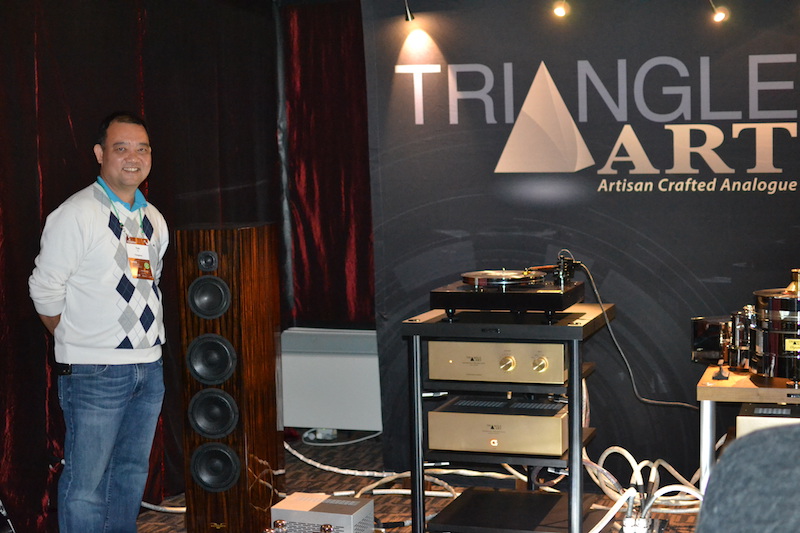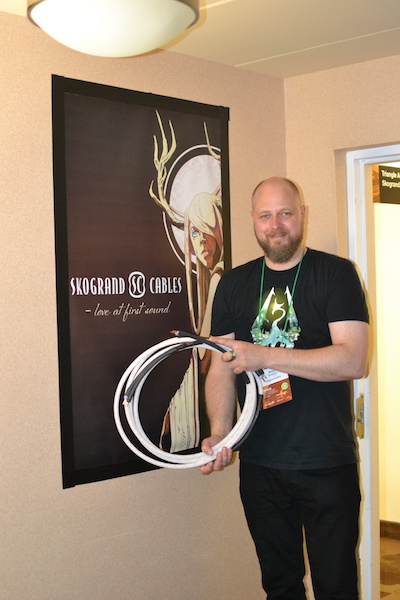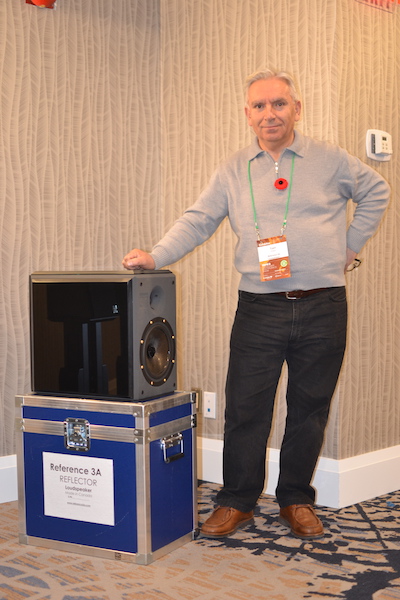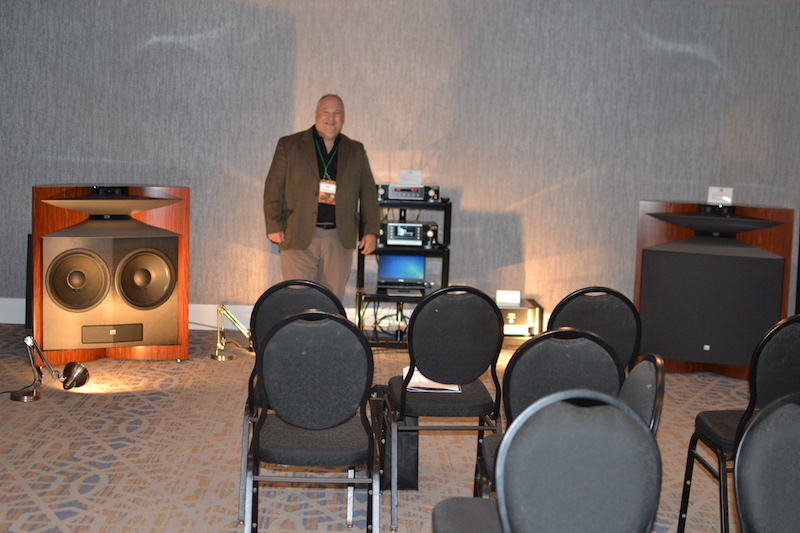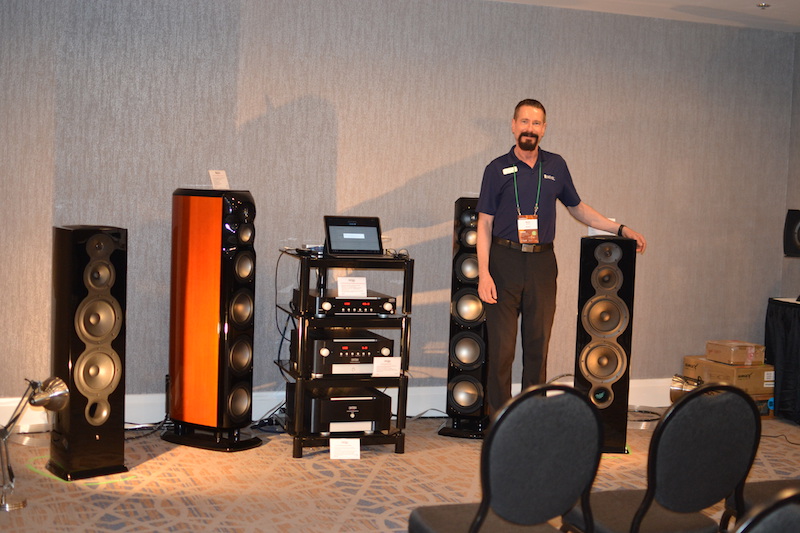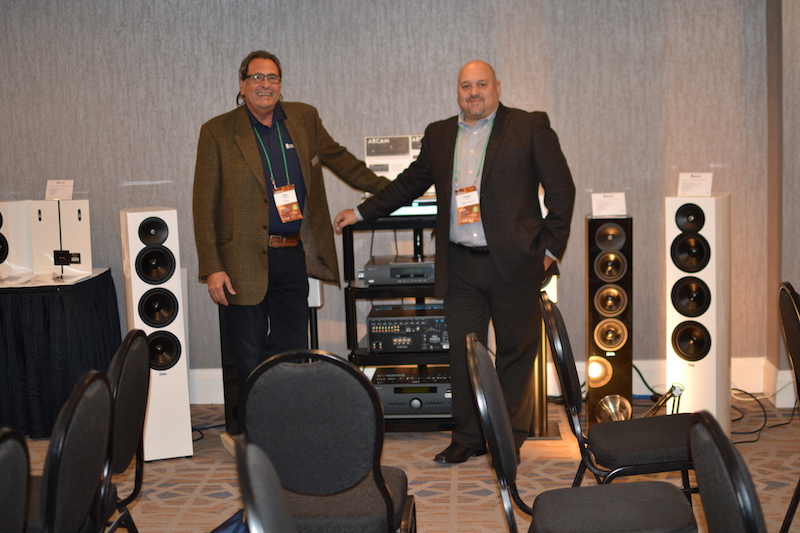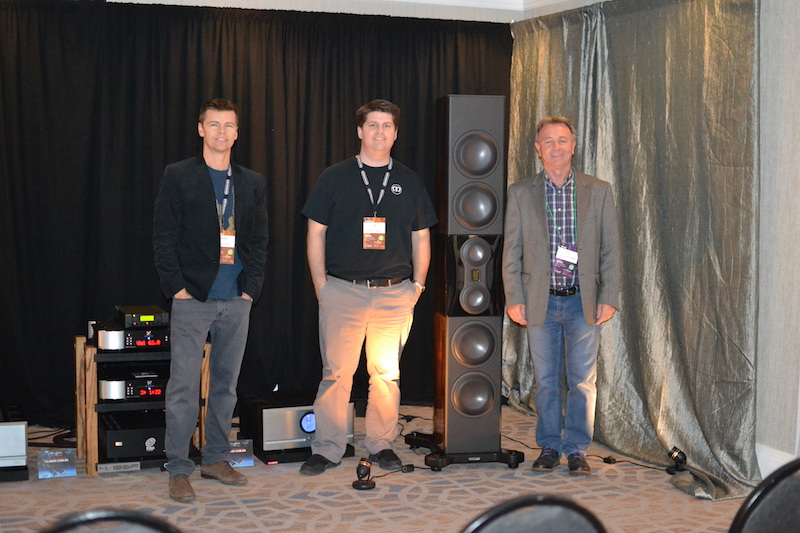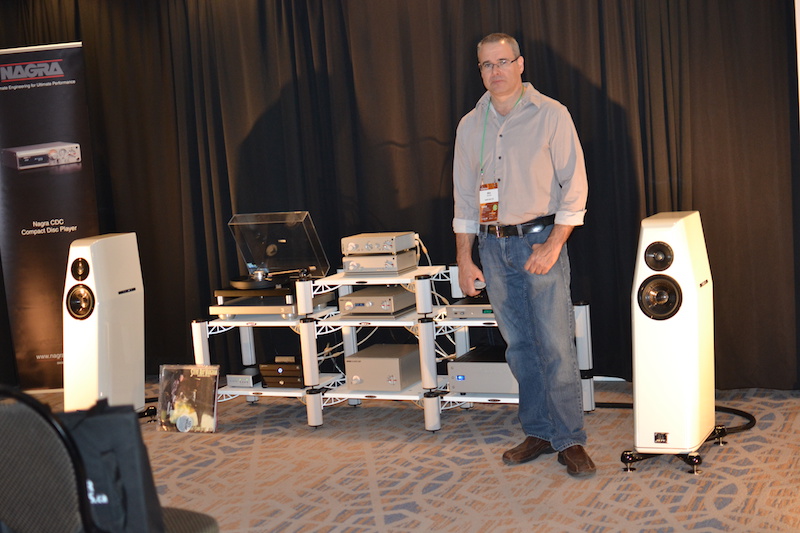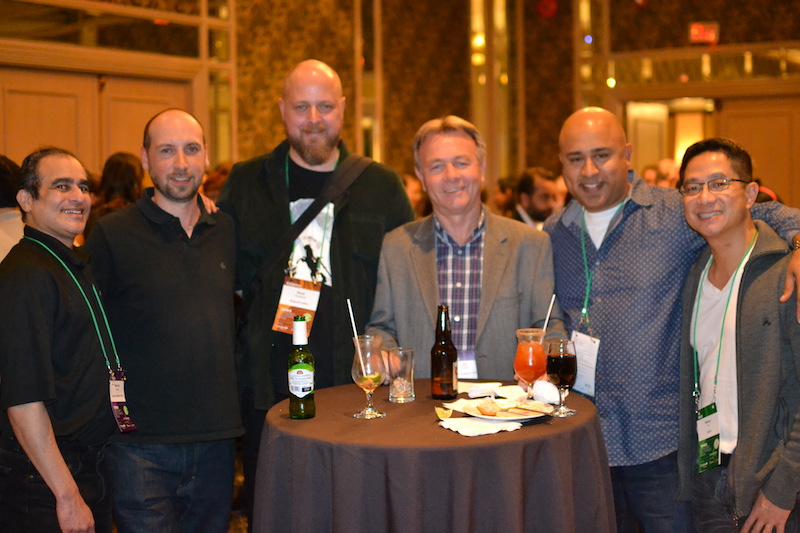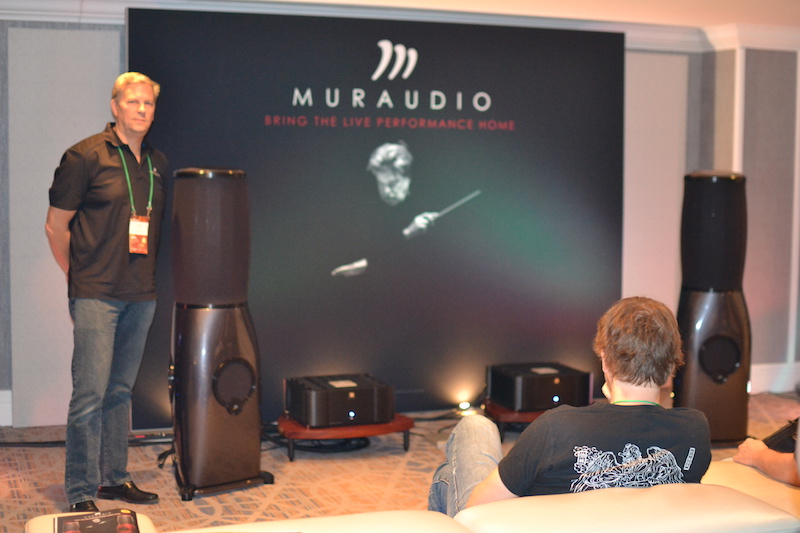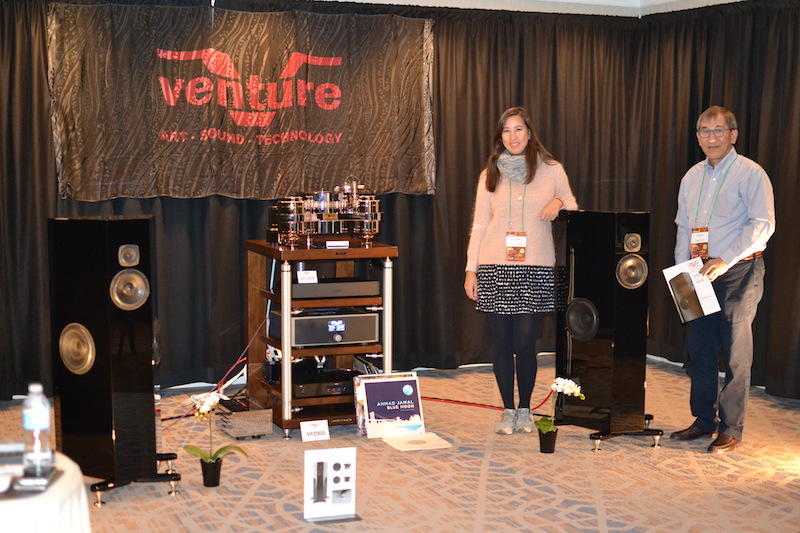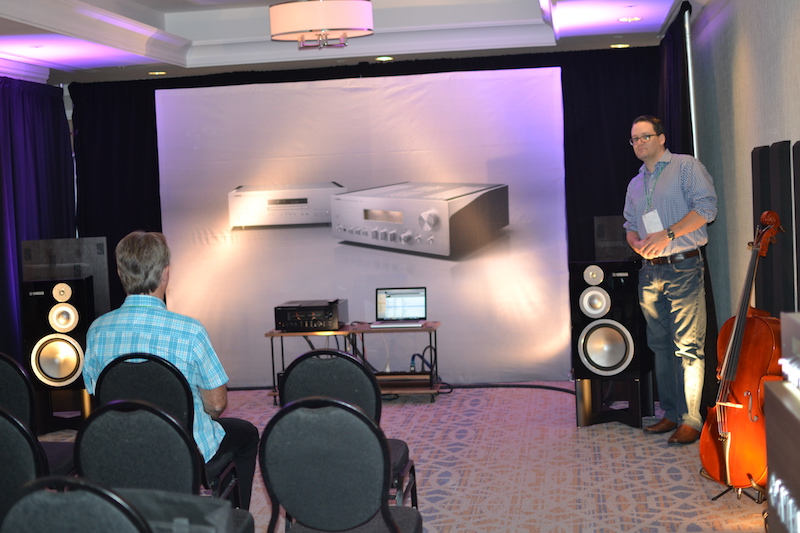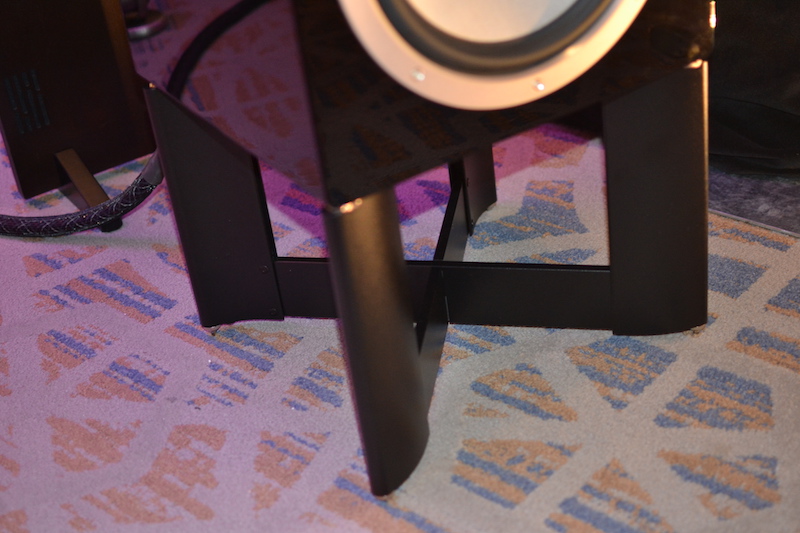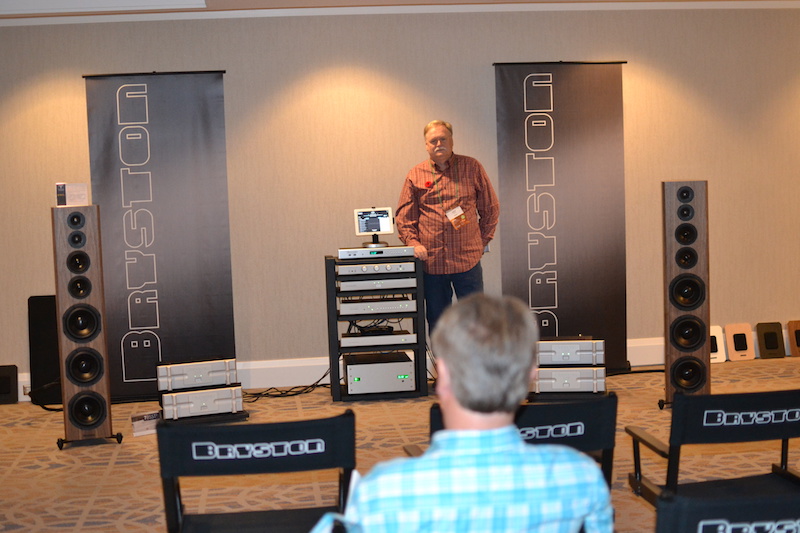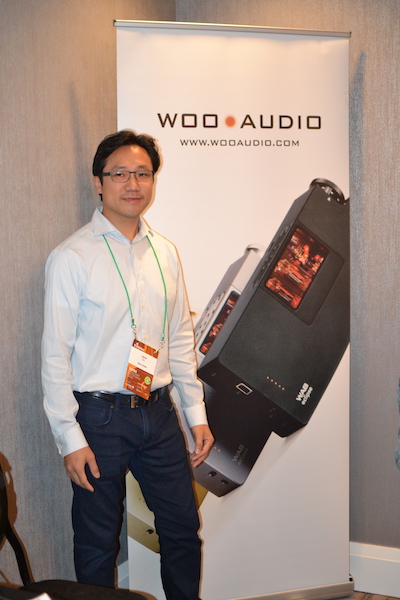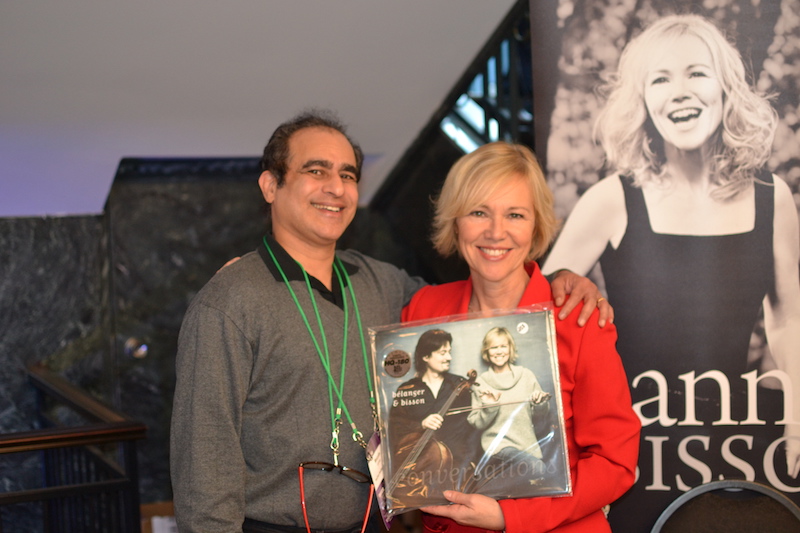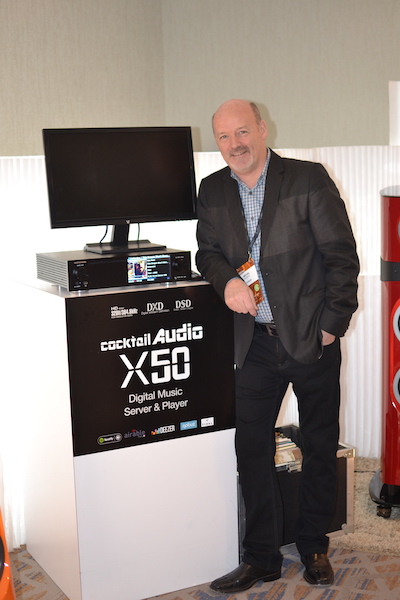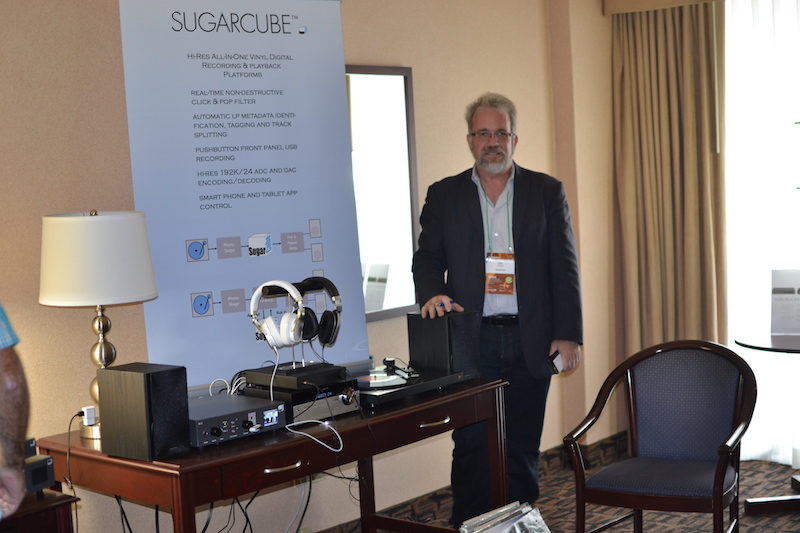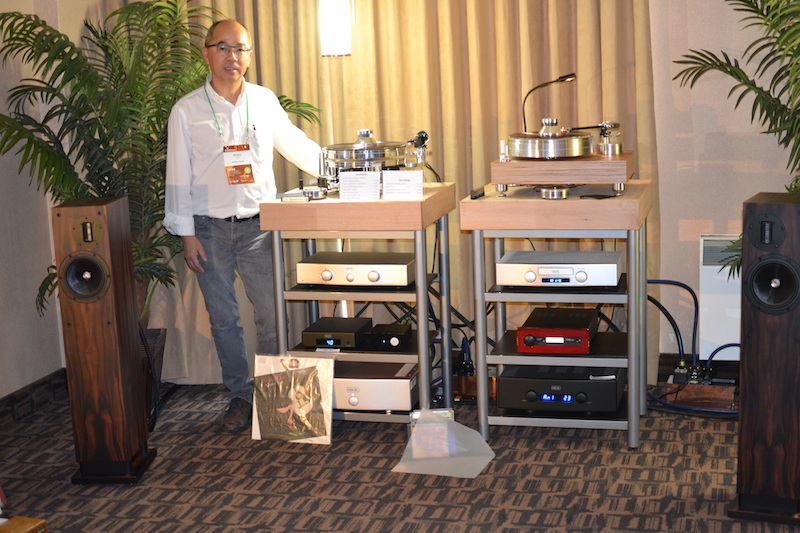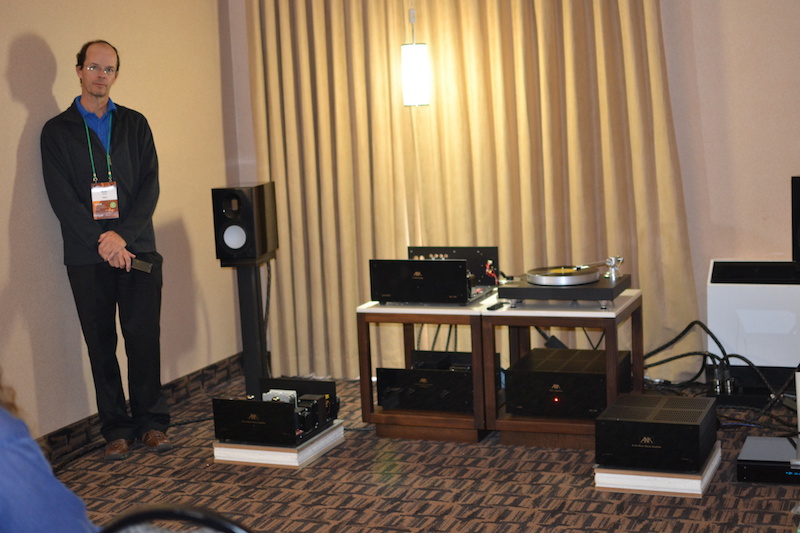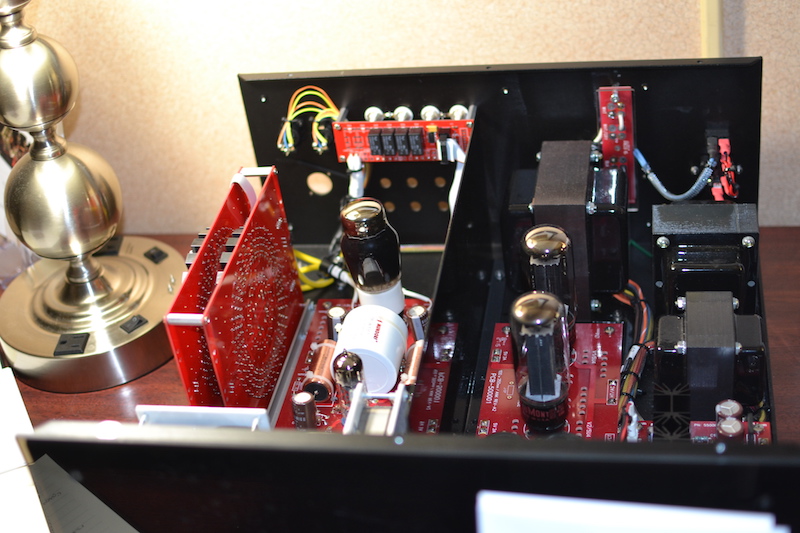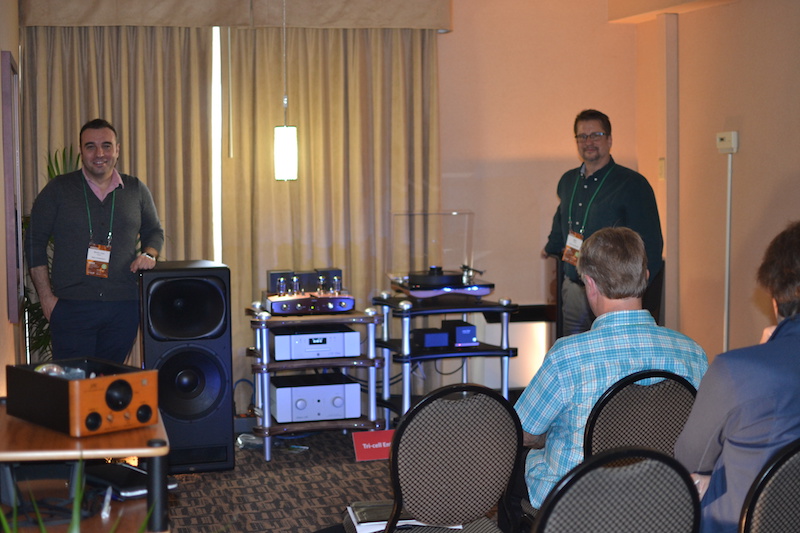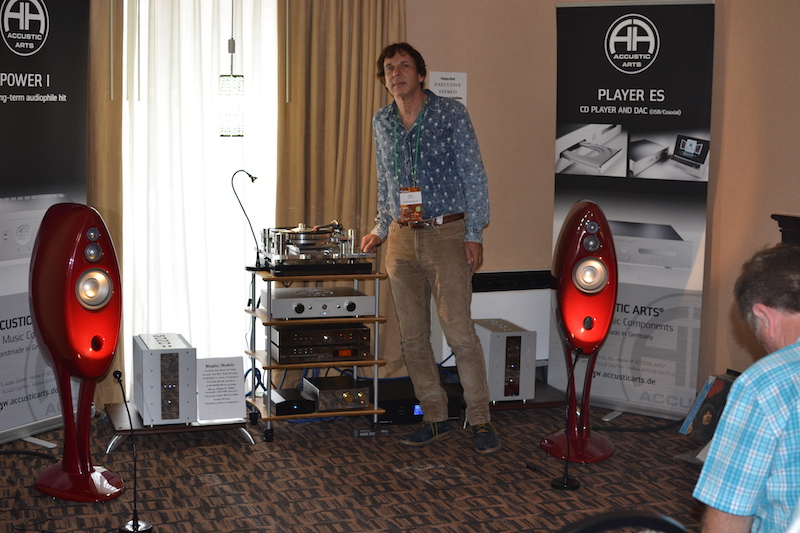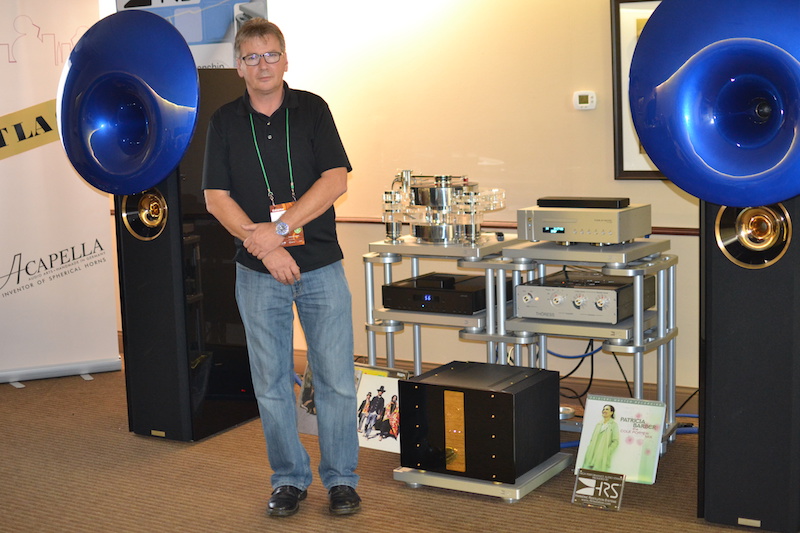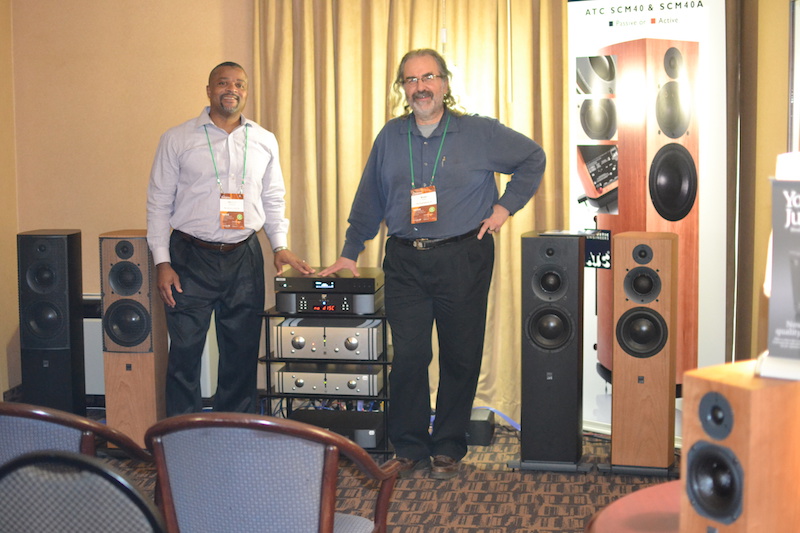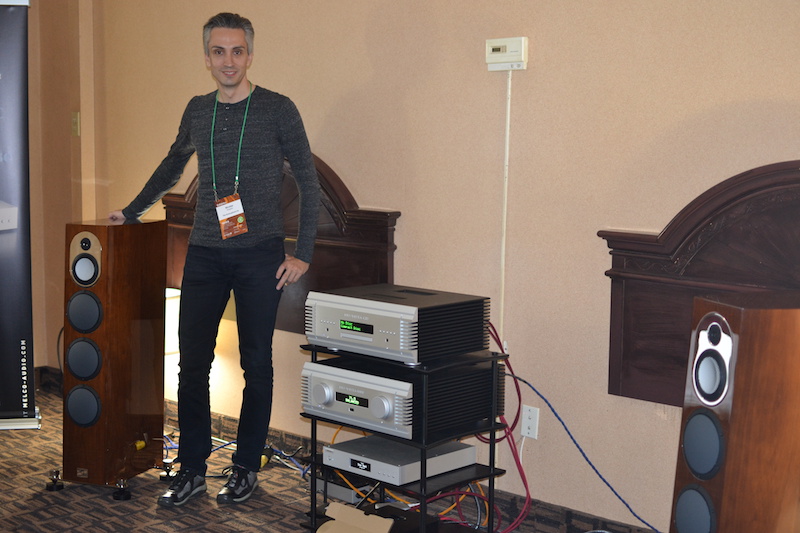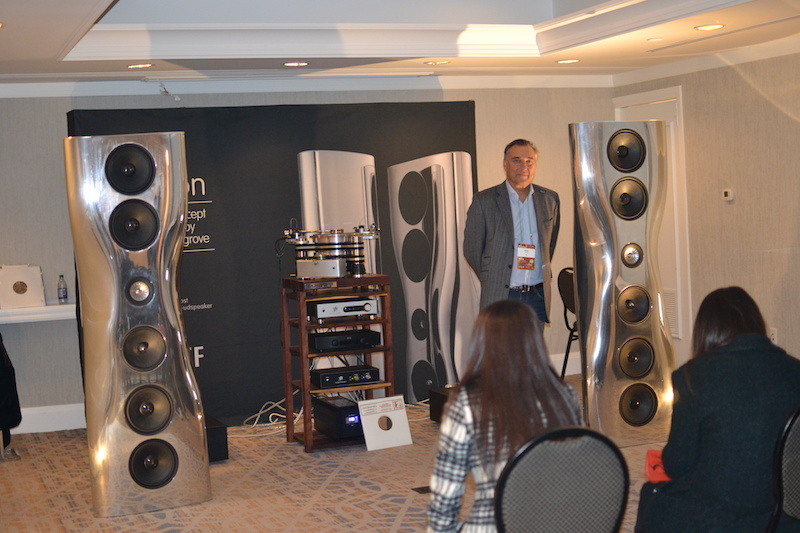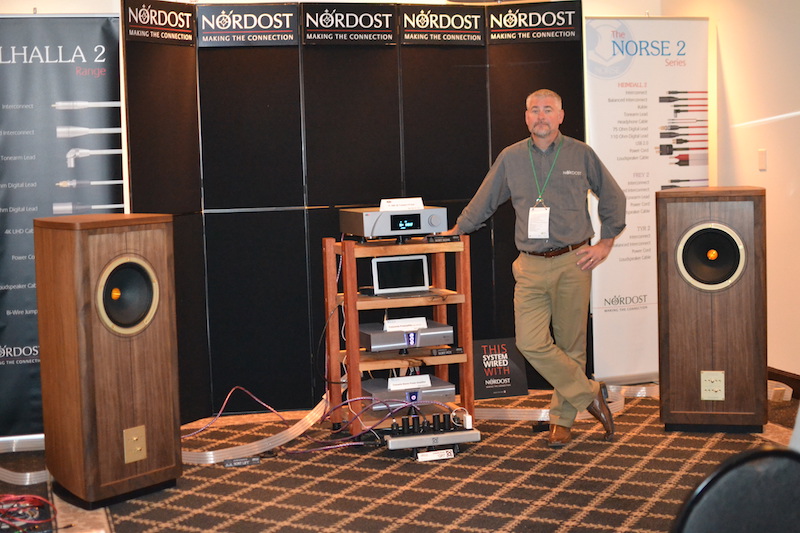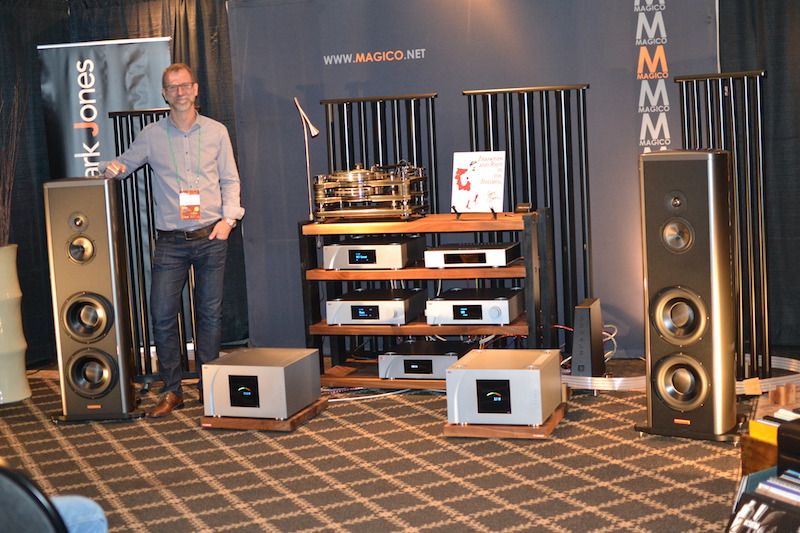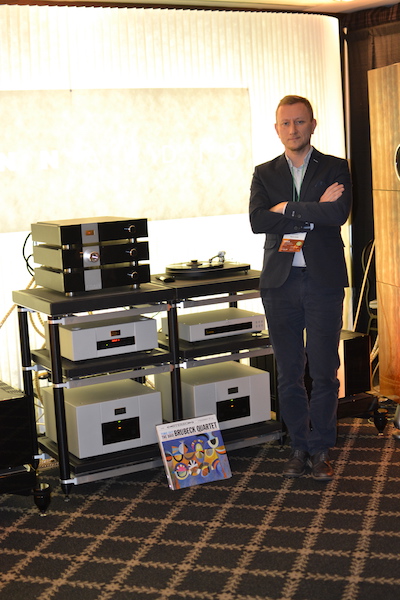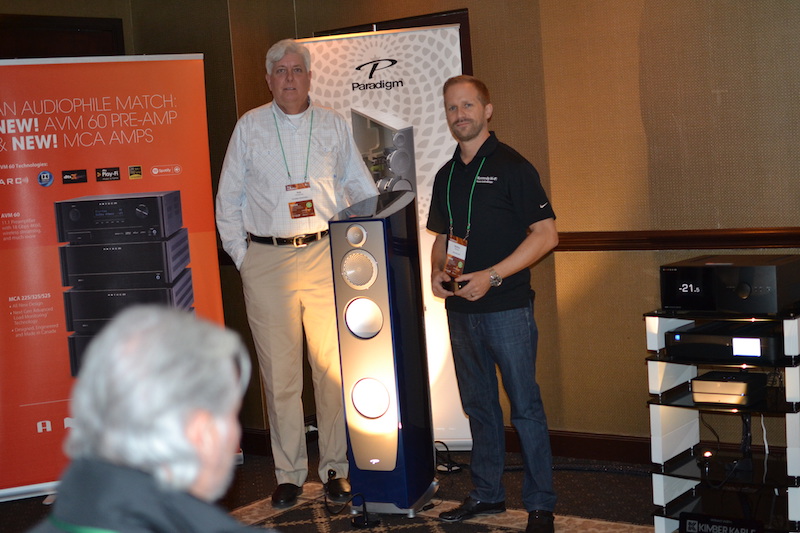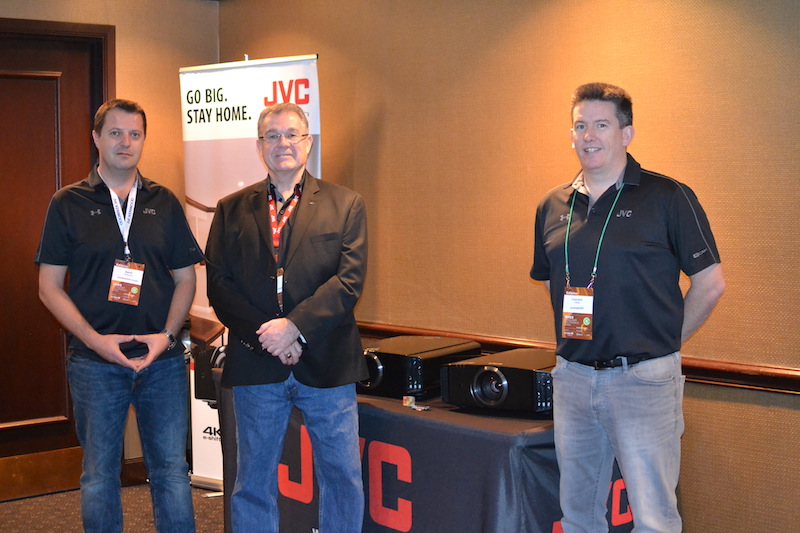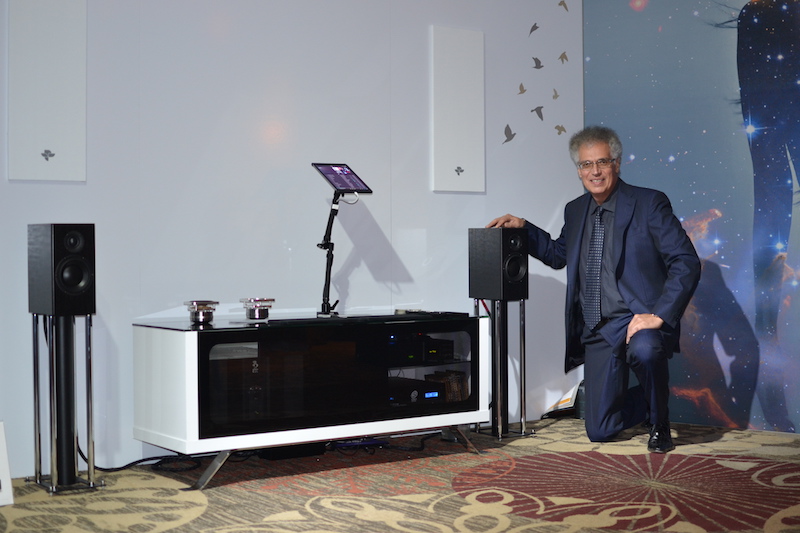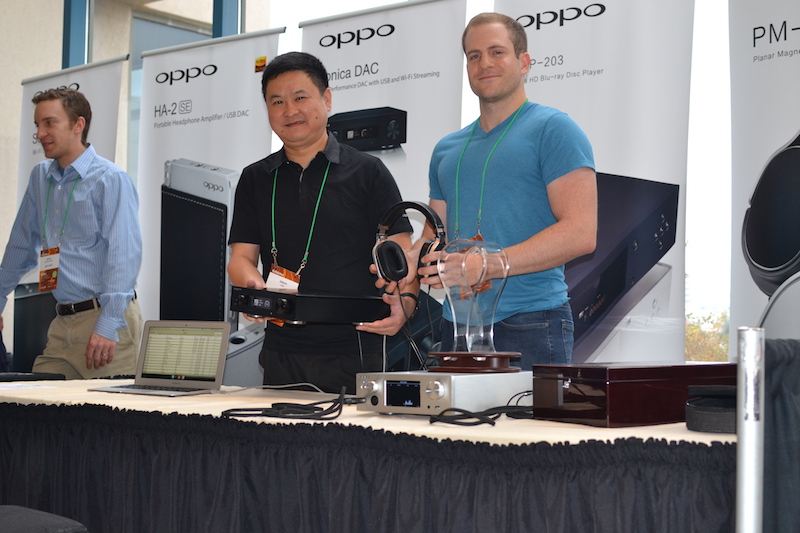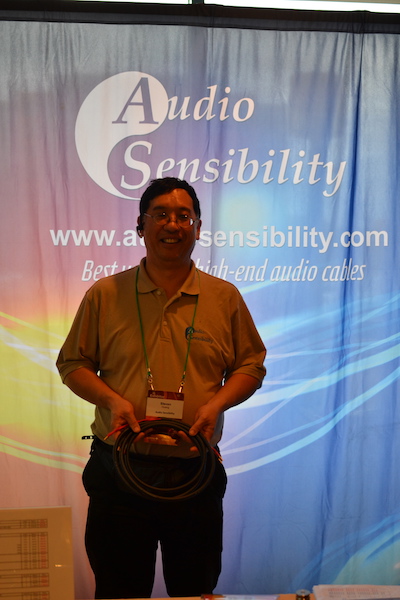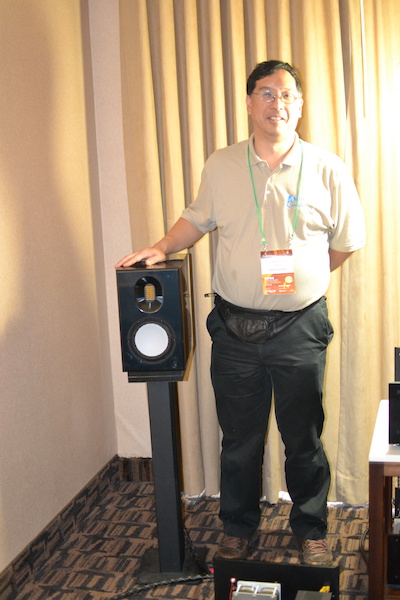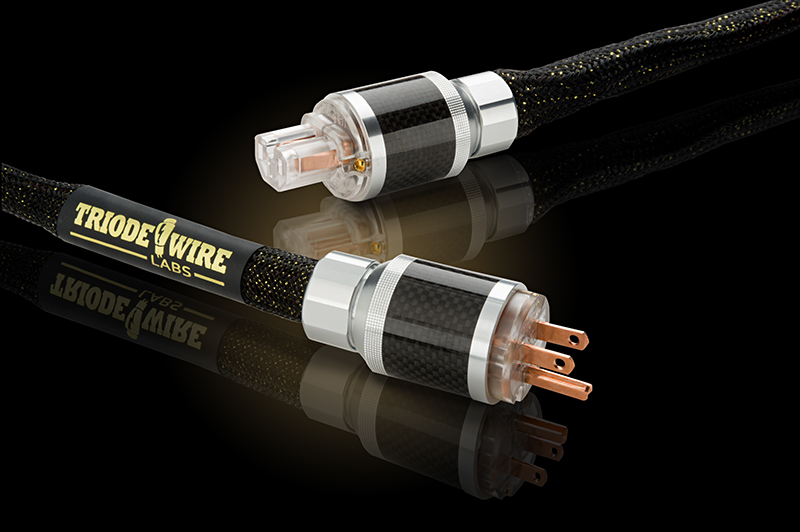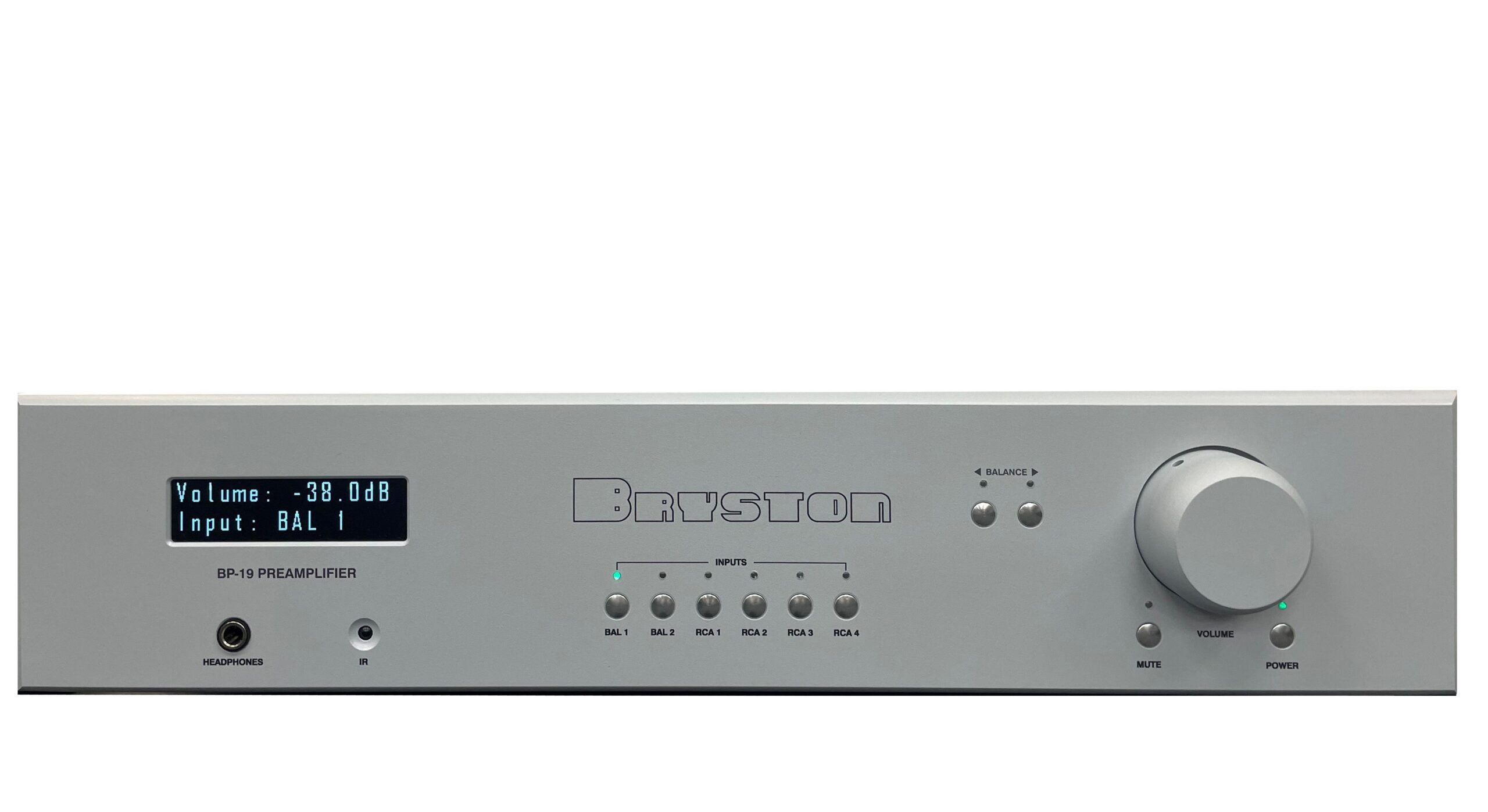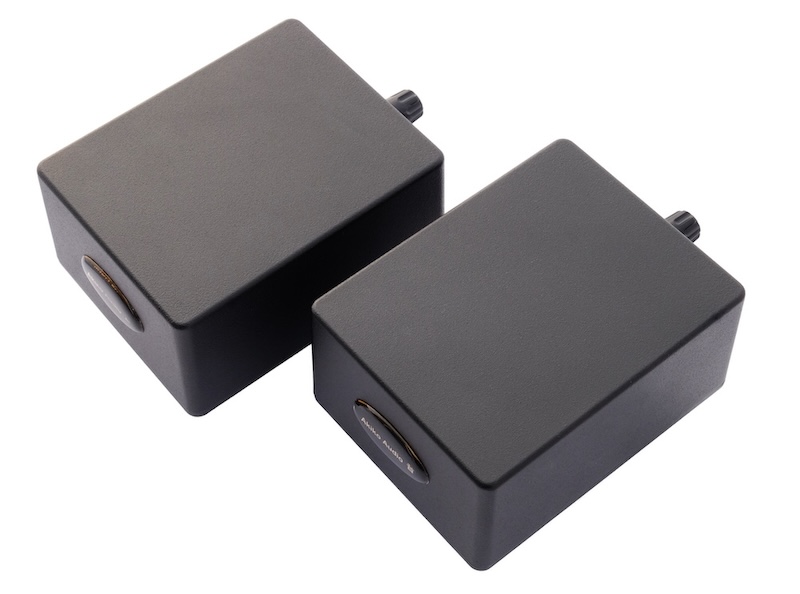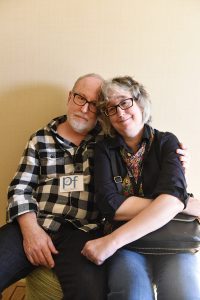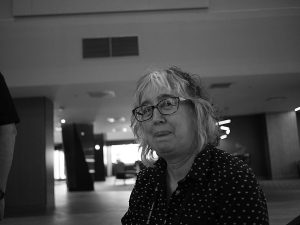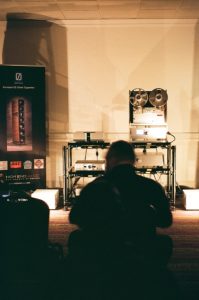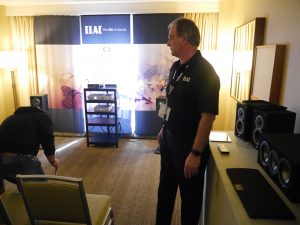TAVES has been growing exponentially over the past couple of years. In fact last year, it had a growth spurt that would send any teenagers with NBA stars in his eyes, into rapture. In 2014 the show attracted around 5200 people. Last year that jumped to 6500 and this year the growth continued with the current TAVES 2016 attracting a very commendable 7600 people.
The current audiophile cohort worldwide consists mainly of the baby boomers that are now ageing and seem to be following the advice of Dylan Thomas who so eloquently wrote -
"Do not go gentle into that good night,
Old age should burn and rave at close of day;
Rage, rage against the dying of the light."
This being the case, one of the urgent requirements for this wonderful hobby to survive and hopefully even thrive, is to get younger people into the fold. Millennials, teens and pre-teens have gravitated in droves towards listening to MP3 tracks via portable players and headphones, eschewing high-end audio due to the perceived incompatibility with their lifestyle choices, the high cost, the elaborate configurations and, in their eyes, the un-cool factor.
Being very cognizant of this, I was most heartened to see so many young people at TAVES 2016, including teens and even very young children. This augurs well for the future of the audiophile hobby and, in my opinion. TAVES is doing the industry yeoman service to perpetuate the popularity of this hobby amongst the younger generation.
It mattered little to me, that the younger crowd at TAVES 2016 was there mainly for the high tech exhibits like drones, electric cars, hover-boards, robots and even multi-sensory, multi-directional force feedback suits, all complimented by technology workshops to help attendees understand what the future is going to look like. Yes, these youngsters came for the 'cool' futuristic stuff, but many of them stayed to sample the high-end audio systems at the show and I could see from the looks on their faces and the glint in their eyes, that many of them were fascinated with how close a high-end audio system can come to delivering a live performance, in the home and the immense pleasure that one can obtain from the experience. I spoke to some of them and was glad to hear that they intended investigating the world of high-end audio after their exposure to TAVES 2016.
One teenager with a great sense of humour told me that while he was impressed with the performance of the gear, he experienced such sticker shock at the show, that often times he wondered whether the 5 to 6 figure numbers next to the gear represented a price or a model number!
Suave Kajko and Simon Au, the show organizers, were busy as bees trying to be everywhere at once to make sure that everything ran smoothly. It was therefore quite a task to get the two of them together for a photo for this report.
They told me that they had even arranged for facilities where parents could keep their kids enjoyably occupied thus freeing up their parents to give their undivided attention to explore the high-end audio side of the show.
TAVES 2016 has grown exponentially to become a lot more than just a high-end audio show, but it has done it in a way that keeps the soul of high-end audio untainted. I spoke to many die hard audiophiles at the show and they all felt that the way the show was configured, they did not feel that the joy of attended a high-end audio show was diminished in any way.
The much larger show this year required Jim Smillie (my partner in crime to cover this show) and I to attend the show on all the three days and even then, we just about managed to cover the high-end audio part of the show in its entirety.
We began exploring the show at the Simcoe Sound room featuring the Totem Element Fire loudspeakers (C$6500), the Icon Audio Stereo 60 integrated amplifier (C$6100), Icon Audio PS3 phonostage (C$4600), Rega RP6 turntable (C$2500). Scott Mercier played us a few tunes. The sound was commensurate with entry-level high-end audio and offered good value for money.
Moving on to the ExaSound room where George Klissarov presented us with his multichannel e38 DAC (US$3849) that has 8-channels. It is built in Canada around an ES9028PRO DAC Chip in a truly balanced design. The other components in the room included the Playpoint Network Audio player (US$2000), the Magnepan 3.7i loudspeakers (US$6000) and the venerable Pass Labs X-350.8 (C$20,000). The sound was polite and non-offensive, but not as involving as I would like.
Roger Kwong at the Focus Audio room had some very imposing looking loudspeakers in a piano black finish called the Master 2 (US$45,000), which use Nomex/Kevlar Hexacone woofers. These were driven by the Concerto Premium 70-watt per channel push/pull integrated mono amplifiers, Metronome Technologie Kalista Signature CD transport/DAC, and Absolute Creations' cables and cords. Roger played mainly Chinese music. The sound was big and bold with a good soundstage, but I suspect those loudspeakers needed a bigger room to breath more freely and perform better.
Toronto Home of Audiophile was our next stop where Wallace Poon welcomed us to the room, which had very impressive sound. The loudspeakers were the Gershman Acoustics Grande Avant Garde (C$13,000/pair), driven by Pass Labs XA100.8 monoblock amplifiers (C$28,450/pair), XP30 preamplifier (C$23,000), PS Audio PerfectWave transport (C$5400) ,P10 Plant (C$6650), Berkeley Audio Design Alpha DAC Reference Series (C$23,500), Clearaudio Innovation Basic turntable (C$7000), TT-5 Tangential tonearm (C$3800), and MC Essence cartridge ($1600). The cables and interconnects were by Siltech and totaled an eye popping C$172,100. Given the lofty price of the components in this room you would expect something quite special and that is exactly what it delivered. The sound stage was deep, wide, and quite holographic. Percussions were crisp and the bass was tight and well controlled. Voices had a good deal of presence and the treble was smooth with just the right amount of sweetness to be seductive.
At the Atoll Electronique room, Mario Gagnon took us through the components on display, which included the CD400 (C$8000), the IN400 (C$7000), and the Davis MV1 loudspeakers (C$8900). Wiring was by Nordost. The sound was distinctly mid-fi and the image quite shallow, which could be because the loudspeakers were very close to the back wall.
Frank Fazzalari at the Coherent room was demonstrating his Coherent Model 15 NEO Be loudspeakers (C$14,000) with a very high sensitivity of 100dB and a frequency response of 25Hz to 22kHz. It has a 15-inch composite X5 cone woofer, 3" Beryllium horn loaded tweeters, Neodymium magnets, and Mundorf Supreme Silver/Oil capacitors. The forte of these loudspeakers was the way they imaged. These large loudspeakers sonically disappeared while creating a very deep, well defined sound stage.
Summit Hi-Fi had two rooms at TAVES this year. In room 1, Rizwan Shiraz auditioned a system that included Dynaudio Excite X38 loudspeakers (C$5500), Emotiva XPA-2 Gen-3 amplifier (C$1300), XSP-1 Gen-2 preamplifier (C$1500), a NuPrime DAC-10 (C$2000), and cables by Kimber (Hero and 8VS).
In room 2 Aamir Vahidi demonstrated the Dynaudio Emit M20 (C$1350), the Emotiva BasX A-300 amplifier, the BasX PT-100 preamplifier (C$500), and the ERC-3 CD transport (C$750). Cables were Kimber Tonic and Emotiva XSS. For such modestly priced systems, they sounded rich, full-bodied, and tonally very accurate. Either of these would be a great starter system for anyone with a very modest budget, or someone just dipping his or her toes into the audiophile waters.
DVL Audio Inc had some big and highly respected brand names in their room including the Magico S7 (US$64,000) driven by the CH Precision D1 SACD/CD transport/player (US$38,000), C1 Reference DAC (US$33,000), P1 Dual Mono phono preamplifier (US$31,250), X1 External supply (US$15,000), Viola Audio Labs Sonata preamplifier (US$35,000), Viola Audio Labs Sonata preamplifier (US$35,000), Bravo stereo amplifiers (US$59,000), and the Kronos turntable (US$21,500) fitted with Haniwa HCTR01 MkII MC cartridge (US$8000). With such mega-buck components, expectations were high, but unfortunately, the sound quality did not meet those expectations.
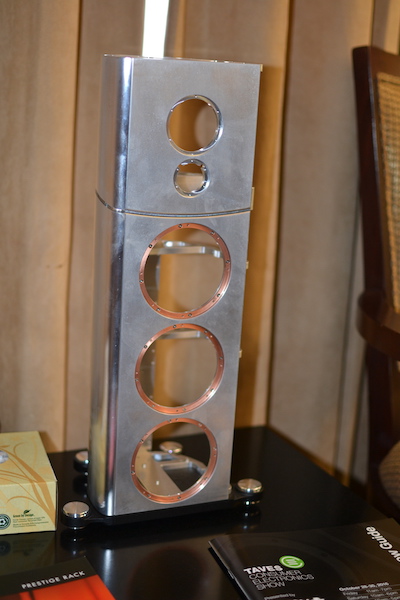
Perhaps it was the room, or the placement of components or the lack of synergy between the components. Whatever the cause, the end result was sound that did not quite give us the goosebumps that we had expected.
We entered the Angel City Audio room with lofty expectations. After all, this was the company that made the ACA Seraphim SE loudspeakers which took last year's TAVES by storm and garnered a few "Best of Show" awards.
This year, Hugh Nguyen, the owner of ACA demonstrated his new model the ACA Seraphim Prime. The Prime has a lot of the features of the SE. The cabinet dimensions are the same, the breathtakingly beautiful wood finish is Cocobolo instead of the Rosewood of the SE version, the tweeter is the SEAS Millennium, which is one notch down from the flagship Crescendo that was used on the SE version. The internal cabling of the Prime is from Kimber Kable in contrast to the SE which used Skogrand cables and there are a few changes in the crossover network. However, the biggest difference is the price. The SE version sold for US$45,000 while the Prime is a much more affordable US$22,000. Kudos to Hugh for bringing in the Prime at less than half the price of its predecessor, while retaining most of the sound quality of the SE.
The Prime was driven by the Melody P2688 preamplifier (US$7200), the M845 monoblock amplifiers (US$6700) and the Onyx OCD-103 CD player (US$19,000). The sound in this room was so good, we had to wait over 20 minutes to get access to the sweet spot. Like the SE version, the Prime delivers truly pristine sound that is so full of life and emotion. The sound is very organic and true-to-life. Voices came through with the presence and transparency that you usually hear through loudspeakers with six figure price tags. One of the only aspects where the Prime plays second fiddle to the SE is in the treble where the latter is a smidgen more like the live performance than the Prime. Hugh had a US$18,000 show special on the Prime, which, to my mind, made it an incredible bargain because I did not hear any speaker at TAVES 2016 that sold for under US$35,000, which could match the overall performance of the ACA Seraphim Prime.
The next room featured three brands—PMC, Audio Alchemy and XLO. Allen Sung demoed the PMC IB2SE loudspeakers (C$31,000 including stands) which were driven by the Audio Alchemy DPA1M (C$2900) stereo hybrid amplifier, the DDP-1 preamplifier/DAC (C$2900), and the PS5 supply (C$900). Cabling was all by the XLO Signature 3 Series. Given the relatively modest prices of the front-end components, the sound was quite enchanting with sensual female vocals and good PRaT.
Hegel Canada components were on demo in the Asona room where Richard Kohlruss and Lawrence Mittler took us through the system which consisted of the Amphion Argon 3LS loudspeakers (C$3800), Hegel H360 (US$5700) music streamer, and the M80 integrated amplifier/DAC (C$2200). The sound quality was commensurate with the price range of these components and offered reasonably good value and build quality.
Given the hype that is omnipresent in the world of high-end audio, it was refreshing to meet the straight talking Danny Labreeque of Luna Cables. He had a full line of cables, which he demonstrated with Falcon Acoustics LS3-5a loudspeakers (C$4000), Line Magnetic amplifiers LM216IA (C$2500), and a Kuzma turntable (C$5000). Danny's cables use unbleached cotton as a dielectric for a dielectric constant of around 2. The cables were very reasonably priced and offered great value for money. Given the tiny loudspeakers, the sound in the room was surprisingly big.
Euphoria Speaker Design is a regular at TAVES and the owner/designer, William (Bill) Laleff is one of the most enthusiastic audiophiles you could hope to find. He demonstrated his entry level Tarim loudspeakers (C$11,200) that were hooked up to the Atma-Sphere MA1 monoblock amplifiers (US$16,000/pair), MP1 preamplifier (US$20,000), MP1 Mk3.2 phonostage, Jean Nantais Lenco Mk II turntable (C$10,000) equipped with the Kuzma 4 point tonearm (US$5000), and ZYX Universe cartridge (US$8000). The sound was a bit on the dry side, but the image had good depth and width.
We then visited the Foldback Sound/Summit Hi-Fi room where Jon Finnigan was playing the Nola Brio Satellite loudspeakers with the Brio 8" Subs (C$1500) driven by the NuForce IDA-16 integrated amplifier (C$3200), the Audio Analog Maestro DAC (C$10,000), and the Silver Circle Audio Tchaik 6 AC power conditioner (C$10,500). The sound in this room was smooth and non-fatiguing, but the female vocals sounded a bit veiled and recessed.
The National Imports room featured the Lyngdorf room Correction System (C$4000 to C$6000 depending on configuration). Jeff Wells demoed this component with Dali Epicon 2 loudspeakers (C$10,000). Jeff claimed that the Lyngdorf is capable of correcting a room up to an astounding 24dB. We got Jeff to switch the room correction mode in and out several times and concluded that it did made a difference, albeit the improvement was a lot more detectable off the sweet spot than it was in it.
Another room where we had high expectations for was the Skogrand/Triangle Art room and it did not disappoint. Tom Vu of Triangle Art gave us the rundown of his products in the room, which consisted of the Venture Audio Ultimate loudspeakers (US$60,000) driven by TA Reference preamplifier (US$18,000), TA monoblock amplifier (US$18,000/pair), the TA Signature turntable (US$16,000) with Osiris tonearm (US$5800), and Apollo cartridge (US$4000). All the cabling consisted of Skogrand Beethoven.
At the show, Knut Skogrand introduced his new affordable line of cables called Vivaldi, which start at just US$600 per cable. This may still be a steep figure for many audiophiles but compared to the Beethoven line and its 5-figure pricing, the Vivaldi line is relatively more affordable. The sound in this room was truly outstanding, in fact one of the best at the show.
At the Reference 3A/Krell room we met Tash Goka, the Reference 3A designer who gave us the details of his new Reflector loudspeakers (US$12,000), which features beryllium tweeters, just a capacitor for a crossover and woven carbon fibre cone woofers. We also met with Rondi D'Agostino who is once again in control of Krell. She had the new Krell line up driving the Reference 3A loudspeakers and those included the Illusion preamplifier (US$15,000), the Solo 575 monoblock amplifiers (US$11,250/each), the Vanguard Universal DAC ($4500), and the Digital Vanguard integrated amplifier (US$6000). Also on display were the Theatre 7, which is the Krell 7-channel amplifier (US$7500), and the Foundation 4K UHD Surround Sound Processor (US$7500). The sound in this room was very expansive and transparent with great presence on both male and female vocals.
Our next visit was to one of the largest rooms at the show—the Erickson room where four highly reputed brands were featured, namely Revel, JBL, Arcam, and Mark Levinson. Here Mario Cadoret took us through one of the three systems that were being demoed. The star of this room were the JBL Everest loudspeakers (US$120,000) that were one of the biggest loudspeakers at the show and which had sound to match. Jim and I spent almost half an hour listening to these incredible transducers. These were the most musical loudspeakers at the show. Too bad they are too big to fit into most homes and so would be restricted to those owning mansions with ultra large rooms.
This room also featured the Revel Salon 2 (C$36,000) loudspeakers demoed by Anthony Rozzi, which were very good but were overshadowed by the JBL flagship in terms of sheer sonic majesty. The third Revel speaker based system was demoed by Allen Feldstein.
Brothers, Sheldon and Jeff Ginn, were there to welcome us into the Kevro room featuring Monitor Audio products, which included the top-of-the-line Platinum II 500 loudspeakers (C$38,000). This year Sheldon chose to drive his loudspeakers with the venerable Pass Labs XA100.8 monoblock amplifiers and they danced beautifully with the Platinum II 500s. The sound was so incredibly involving and true-to-life; we could have spent the rest of the show just enjoying the music in this room. The front-end components also included the Simaudio 740P and the 650T DAC/transport.
Mark Hamelin of Audio Eden is a regular at TAVES and this year he had the Kharma Elegance Series S7 (C$21,750) playing. These transducers have beryllium tweeters and carbon fiber cone woofers, which go down to 21Hz. The front-end electronics included the Nagra Classic DAC (C$18,000), Classic amplifier (C$21,500), and the Classic preamplifier. He also had the Bryston BLP1 turntable (C$4000). The sound was vintage Kharma; smooth, controlled and with all the presence and texture that you could hope for.
At the end of Day 1 of the show, the organizers held a dinner event for exhibitors and the media, which was a fun event. Featured in this picture from left to right are yours truly, Suave Kajko, Knut Skogrand, Jim Smillie, George De'Sa, and Simon Au.
We began Day 2 in the Muraudio room. We were greeted by Rob Runolfson the Muraudio CEO.
This room featured the Domain Omni PX2 loudspeakers (US$79,500). wayne Mosley the VP of Marketing took us through the front-end components, which consisted of the Moon 750 DAC/CD transport (US$14,000), the Moon 820S supply (US$8,000), the Moon 850P preamplifier (US$30,000), and the Moon 870S monoblock amplifiers (US$44,000/pair). Cabling was by Shunyata, which totaled to a retail value of US$21,000. The grand total came in at US$196,500. Because of the omnidirectional nature of these loudspeakers, there was minimal variation in tone and timbre as you moved around in the listening room. The sound was effortless and true-to-life and both male and female voices were rendered with an unusual amount of body and presence.
At the Venture room we met Hoo Kong the owner/designer. He and Lee Ming gave us the rundown of what they had on demo. Venture products are made in Belgium and Singapore. They make their own driver units in-house, using abaca/graphite cones for both the woofers and tweeters to ensure uniform voicing. The source was the Triangle Art Reference SE (US$28,000) with the Osiris tonearm (US$5800) and the Apollo cartridge ($8000). The Quantum 8 loudspeakers (US$60,000) were playing and the sound was a wee bit on the bright side but nevertheless very involving.
The Yamaha room featured some exciting new technologies including the NS5000 loudspeakers (US$15,000) that were demoed by Paul Bawcutt. They feature a revolutionary new synthetic cone material called Zylon that Paul claimed is the strongest speaker cone material in the world and which cannot be burnt in the Earth's atmosphere. The cabinet is made of Japanese birch plywood, the same material that is used in Yamaha pianos. The loudspeakers rest on specially designed stands that are very efficient at diffusing energy from the loudspeakers to enhance performance.
Typical of Yamaha, the sound was very neutral and balanced across the audible frequency spectrum though voices sounded a bit recessed and veiled.
As usual, Bryston had a very large room at TAVES 2016 and this iconic brand had a room full of visitors almost throughout the show. The downside to this is that there was a constant chatter of very audible voices, which make it difficult to gauge the sound quality in the room. James Tanner the Bryston VP gave me the rundown of all their new wares. These included the BAX-1 Active Crossover (C$3500) that was employed to tri-amp the Model T loudspeakers through a set of 7B Cubed and 3B cubed amplifiers driving the woofers and mid/tweeters respectively.
In the Woo Audio room, Jack Woo gave us demos of their Sony MDR-Z1R (US$2300), Abyss AB 1266 (US$4500), and Stax 009 (US$4000) headphones. They all sounded marvelous but at these prices, you would expect nothing less.
The lovely and talented Anne Bisson was busy selling and signing her CDs and vinyl records including her new release Belanger & Bisson.
Anne's records are a staple for me when I review high-end audio products. Every year when we get our picture taken together I look a year or two older while Anne looks exactly the same. Maybe next year, Anne will share will me how she discovered the fountain of youth.
You can always expect to see some exciting and innovative new products in the Plurison room and this year it was no different. National Sales and Marketing Director Michel Plante gave us the tour of all the latest and greatest items that Plurison had brought in from all the corners of the globe. One component that caught our eye was the Cocktail Audio X50 Digital music server & player (US$2495/C$2995). This should be a big hit will the millennial generation. It is a universal player that plays most disc formats and also has two slots behind to load two hard drives up to 8 terabytes each. It supports DSD up to DSD256 and PCM up to 24/192. Its 7-inch TFT LCD screen has intuitive GUI. It can rip CDs with metadata and album cover art and has major on-line music services integrated. These include Tidal, Deezer, Aobuz, and Airable. Its plethora of connections include coaxial and optical out as well as AES/EBU/XLR, USB 3.0 and 2.0.
At the Sonic Artistry room Jonathan Badov and Edgar Balian gave us the rundown on the system playing. The Davone Solo loudspeakers (C$10,000) was fed by the Dohmann Helix 1 turntable (C$52,000), with the CB9" tonearm (C$5200), Reference 2 MC phono cartridge (C$3820), Devialet 400 Expert monoblock amplifiers (C$18,000), and the 200 Expert integrated amplifier (C$10,000) all connected by BIS Audio cables. Despite the shallow depth of the room, the sound image was surprisingly good. Tonally it was a bit polite but had good saturation in the midrange.
One of the biggest surprises of the show was the Sweet Vinyl room where Dan Easkins demoed the Sugar Cube (US$2500), a component that gets rid of the pops and clicks of less than mint condition vinyl records with minimal impact on the overall sound reproduction. According to Dan, the Sugar Cube achieves this because it works in the digital and time domain rather than the analog domain. Apparently it samples the music 192,000 times a second to eliminate the pops and clicks. He demonstrated the Sugar Cube using a low cost Sony mid-fi system bought from Best Buy for chump change. He controlled the Sugar Cube via an app downloaded to his smart phone. The Sugar Cube is due to be launched in January 2017. I foresee this to be a bestseller and a must have component for vinyl junkies with a huge library of worn and scratched records.
In the Ovation Audio room we found Rickey Yan demonstrating a system that consisted of the ProAc D20R 2-way loudspeakers accompanied by Hegel CDP2A CD player (C$2700), P2 preamplifier (C$2900), Hegel H20 amplifier (C$5900), Acoustic Solid 111 Metal + WBT 303 tonearm + Nagaoka MP110 turntable (C$3875) connected to the Acoustic Solid MM/MC phonostage (C$1800). For the relatively low price of the whole system, the sound in this room was as good as it got at the show. In fact, the turntable kit, given the build quality and sonic performance would have to be one of the best value turntable packages I have ever encountered.
We then got too the part of the show that featured brands by Tri-Cell Enterprises, one of the oldest, largest and most respected distributors in Canada, headed by Vince Scalzitti, the Godfather of Canadian High-End Audio. Vince had multiple rooms at the show. The first room had the MA30 SG loudspeakers (C$4150) in its basic form and in an upgraded version (C$5829). The upgraded version is wired internally with Audio Sensibilities Statement OCC copper cables and WBT NextGen copper binding posts mounted on carbon fiber plates. It is good to see a steady increase in the number of manufacturers offering their loudspeakers with enhanced quality internal cabling and binding posts. To my ears, they make a difference and I hope this trend continues. These loudspeakers were driven by the DIY Ankits EL-340 monoblock amplifiers.
The sound quality was definitely above average. The percussions stood out with near perfect PRaT.
Another Tri-Cell room had Audio Vector/Transrotor gear. Andrew Austin and Positive Feedback's Marc Phillips played host in this room. The Audio Vector SR6 Avantgarde loudspeakers (C$32,000) were driven by the Unison Research Unico 90 integrated amplifier (C$5200) and fed by the Transrotor Max-1 turntable (C$5500) connected to the Andros 1.2 phonostage (C$5700). This was yet another grand sounding Tri-Cell room.
We moved on to the Accustic Arts/Vivid room, yet another Tri-Cell presentation manned by Sam Radzansky and featuring the Vivid B1 Decade loudspeakers (C$20,000). The front end consisted of the Accustic Arts Mono II amplifiers, Reference tube preamplifier, E.A.R. DAC 4 Acute 4 transport, E.A.R. 88PB phono preamplifier, Oracle Delphi V1 MkII turntable with SME tonearm and a Charisma Audio MC cartridge. Cabling throughout, was provided by Cardas and power conditioning was done by Pure. This is one room where the loudspeakers sonically disappeared and we could hear a glorious soundstage that was deep and wide.
The most visually impressive Tri-Cell room was the Acapella Audio Arts/HRS room, hosted by Grant Phillips. The room was dominated by Acapella Atlas Spherical Horn loudspeakers (C$118,000), the Accustic Arts Amp1 (C$15,000), the Transrotor Orion turntable ($28,000), Goldnote CD-1000 CD player (C$8200), Thores' phonostage (C$13,500), and the HRS Rack (C$18,000). All cabling was by Cardas Clear Beyond. The sound in this room was open, transparent and effortless with a midrange to die for. This room was on the short list for "Best Sound of Show".
The Gramophone Distribution Company room was our next destination and they had two rooms. At the first room, we were greeted by Bryan Taylor and Michael Bloxsom. They had two pairs of loudspeakers on demo, the Active ATC SCM40A and the passive ATC SCM40P. The electronics included the ATC CA2 preamplifier, the Simaudio Moon 260D CD transport hooked to the 280D Streaming DAC, a Melco Audio N1A Music Server, and power conditioning by Audience Adept Response.
Bryan frequently switched between the passive and active option on this loudspeakers of this system. Most of the tracks sounded better with the active mode though there were a couple of tracks that we preferred on the passive setting. The second room was hosted by Nicholas Perpere who played us some lovely tunes on the Marten Design Mingus Quintet loudspeakers (C$72,000), driven by Musical Fidelity Nu-Vista 800 integrated amplifier, fed by a Music Fidelity Nu-Vista CD player hooked to a Chord Audio Hugo TT DAC, linked by Luna cables with Audience Adept Response providing the power conditioning. This sound in this room was truly sublime. The midrange had just the right amount of bloom and the highs were silky smooth and totally non-fatiguing. This is a system that I could live with quite happily!
Next was the Zavfino room and it was refreshing to see that it was a completely no-hype zone thanks to the down-to-earth, straight talking Will Tremblett. Will is a plain talking cable and turntable designer that focuses on delivering the best possible value for money. His cables have similar build quality and aesthetic beauty as some rival brands costing ten times more. We did not get a chance to hear his cables, but if the performance is as good as the build quality and aesthetics, these would be one of the value leaders in the audio cable industry. Will expressed his bewilderment at how some cable companies got away with charging as much as a brand new mid sized sedan for a pair of speaker cables when, in his opinion, the cost of the materials that go into those cables is just a fraction of the selling price, especially since the price of copper, the main ingredient in most cables, has been plunging over the past few years. Will's turntables come in standard finishes as well as some very artistic renditions. The latter are hand painted and so each turntable is a one of a kind.
We were then off to the KEF/VPI room which had the 4-way, 9-driver aluminum cabinet KEF Muon Mk II, one of the most visually stunning loudspeakers of the show and which retail for US$225,000.
Johan Coorg gave us the rundown on these behemoths. When asked if these loudspeakers were a PITA to keep smudge free, Hohan facetiously said that anyone who owned them could afford a butler to clean them multiple times a day. The front-end electronics consisted of the VPI Titan turntable (US$48,000) that had a unique magnetically levitating platter and air suspension feet for structural vibration isolation. The arm assembly was the JMW 3D Aurora (US$4000). The cartridge was the Lyra Atlas (US$12,000). The phonostage was the VPI Aurora (US$6000). The power conditioning was provided by the Isotek Genesis (US$10,000). Amplification was provided by the Hegel H30 mono blocs (US$15,000). I wish I could say that the sound was as impressive as the opulent aesthetics of the very pricey components but sadly it wasn't. Sure, it was brash and bold, with a sound stage as big as a house, but the midrange was quite congested and the highs were not exactly smooth. The bass was the saving grace, being tight and tuneful.
The Nordost room was next. Michael Taylor showed us around the various components that included the Tannoy GRF90 loudspeakers (C$25,000) that had a charming old-world finish. The electronics consisted of the Viola preamplifier (US$22,500), the Viola stereo amplifier (US$22,500), and Nordost Valhalla 2 cabling throughout. The Tannoy/Valhalla2 combo had a lot more synergy than last year's combination of the Odin2/Wilson Audio Shasha 2 (C$40,000). This pairing resulted in sound that was a lot more focused and transparent. The room also had the Nordost Sort Lift Cable Elevators, which at a lofty C$720 a pair had many visitors in the room rolling their eyes in disbelief!
Last year Mark Jones got our "Best Sound of Show" vote so it was with high expectations that we entered his room this year. This year Mark had the Magico S5 MkII (US$38,000 to US$42,000 depending on finish), driven by the CH Precision L1 preamplifier (US$35,000), M1 amplifiers (US$95,000), and fed by the Kronos Pro turntable (US$38,000) fitted with the Kronos Black Beauty tonearm (US$8500) and Ortofon A95 cartridge (US$7000). The phonostage was the CH Precision P1 (US$31,250). The digital source was the Aurender N10 (US$8500) and the rack was by Trev Doyle's Massif Audio. Cabling was by CH Precision and Nordost and the power conditioning was by the CH Precision X1 (US$15,000). The room was treated with acoustic panels from Sonic Solutions. You can always count on Mark to deliver excellence and this time was no different. The sound in his room was truly majestic and very involving as was evident in the always-crowded room he had. Mark came excruciatingly close to repeating as "Best Sound of Show" but this time he lost by a hair.
Last year, one of the finalists for "Best Sound of Show" was the Wynn room. This year it seems like Wynn Wong and Jorn Janczak were determined to win the top prize and so he pulled out all the stops to attain that goal. His room featured a system that had a total value of close to a million US dollars. The Tidal Sunray G2 loudspeakers (US$145,000) took center stage. They were supported by Goldmund Electronics, a Thales turntable, and ZenSati cabling.
The Amp was the Goldmund Telos 1000 mono blocs (US$140,000), the DAC was the Mimesis 20H (US$88,000), and the CD player was the Aidos 17 (US$12,000). I also got to speak to Jorn Janczak the CEO of Tidal, Mark Johansen the owner of ZenSati, and Rodolphe Bonlanger of Goldmund. Jorn told me that his main goal is to get out of the way of the music by designing loudspeakers that are a clear window to the source.
Mark took me through his line of cables and cords. His Silezio line of cables start at US$50,000 and go up from there. This would put it into the same territory as a brand new 3-series BMW. He claimed to use air as a dielectric but was not comfortable discussing the technology that justified his stratospheric prices. He was not even able to even give me the dielectric constant of his cables. He sure uses a lot of gold in his cables and cords which could account for some of the steep prices. I am not sure if Mark's cables represent a new high in cable performance but his prices definitely do. In any case, this cost no object approach that Wynn took, did result in sound that was mind-blowing to say the least. It was the most neutral and true-to-life sound at the show and it gets our "Best Sound of Show" vote.
I was glad to see that the Kennedy Hi-Fi room at TAVES this year had a lot more emphasis on 2-channel rather than home theatre, which was the main focus last year. Marcus Bundze, the owner of Kennedy Hi-Fi and Ron Armstrong of Paradigm, showcased Paradigm's new Persona line of loudspeakers, which is the new flagship range. On demo was the Persona 9H Hybrid (C$38,000), the Center (C$8800), and the four Bipolar Prestige Surrounds 25S (C$1100 each). The electronics included the Anthem AVM 60 Prepro receiver (C$3300) and two Anthem 5-channel MCA 525 amplifiers (C$4000 each). The passive loudspeakers in the Persona line-up include the 7F (C$28,000), the 5F (C$20,000), and the 3F (C$12,000). What is unique about the Persona loudspeakers is that they employ beryllium for the cones of both the tweeters and the midrange drivers. With the pricing on the Persona Line, Paradigm has entered into the rarified air of Magico, Kharma and Verity price territory. The performance expectations at this level are sky high and only time will tell if they are able to make in roads here. According to Ron, their dealer network is very excited about the Persona line, which augurs well for its success. We listened to the top-of-the-line Persona 9H and were suitably impressed. Ron promised to arrange for a review which will give me a better sense of whether the performance of the Persona line of loudspeakers are worthy of their lofty pricing.
Next door to the Kennedy Hi-Fi room was the JVC room where Greg Cameron, Damir Klobukar, and Francisco Lacey were demonstrating their new line of Precision HDR D-ILA 4K e-Shift 4 projectors. We were totally blown away with the picture quality, which is, by far, the best we have ever seen. The sharpness, focus, brightness, and black levels were truly astonishing to say the least. On demo was the DLA-X750RB projector (C$7500), which delivers 1800 lumens. The flagship DLA-X950RB (C$11,500) has an even more impressive 1900 lumens. They played an action segment from from the movie Lucy and I never felt so totally involved when watching a movie before this. With this line-up JVC extends its superiority over the rest of the field in the 4K Video Projector sphere.
The main sponsor of TAVES this year was Totem, the iconic Canadian speaker brand. Father and son (owners) team of Vince and Nico Bruzzese welcomed us to their very large room where they were playing their new creation, the Totem Sky (C$1850) a petit bookshelf speaker that is the successor to the Model 1 which did very well for Totem for 30 long years. Driving the Sky was electronics from Brett D'Agostino's BSC Brand model Stereo 60 (C$5000) and a Naim preamplifier/DAC ($3500). The tweeter of the Sky is a silk/synthetic blend that delivers frequencies up to 30kHz. The 3-inch woofer is from Morel and has an unusually large 7.5mm excursion, which would account for the surprisingly prodigious bass that these tiny transducers were delivering. Vince claims that the bass goes down to 30Hz at minus 9dB. For this size of speaker, the sound was quite full bodied even in the large room they were playing in. The Sky seems to be a worthy successor to the Model 1.
Christopher Vic and the Jason Liao, the ever-smiling designer of OPPO were there to greet us at the OPPO stand. Jason showed me OPPO's new Wi-Fi speaker the Sonica Grand (US$700) that is due to be introduced in early 2017. Also due for introduction is the UDP-203 (US$500) and OPPO's new 4K/UHD Blu-ray disc player. The third component in OPPO's pipeline is the Sonica High Resolution DAC. I got to sample the OPPO HA-2 SE (US$400) portable headphone amplifier and DAC, through the OPPO PM-1 headphones (US$1429) and was impressed with not just the sound quality but also the way these headphones painted a proper sound stage rather than giving you the sensation of most of the sounds being in the middle of your head; which is typical of most headphones deliver. I use some OPPO components as my reference equipment and have always been impressed with the quality and performance of their products and also with their very courteous and professional after-sales-service.
Our final stop at the show was at Audio Sensibilities where Steve Huang showed us his new entry-level speaker cable that retails for a very reasonable C$200 for a 2.5-meter length.
Steve also gave us an audition of his new Audio Sensibilities Statement loudspeaker (C$5800) that has 92dB efficiency, which is unusual for such a small speaker. For his first foray into speaker designing Steve has done a commendable job. The sound from this speaker was full and dynamic with surprisingly little distortion even at high volume levels.
TAVES is gradually and successfully morphing from a pure high-end audio and home theatre show into a full-fledged consumer electronics show. This has resulted in very impressive growth of visitor traffic and exhibitor participation. The additional bonus of this show is that the younger crowd that now visits TAVES to view and try out the cool new categories like robotics, electric cars, hover boards, drones etc. are now getting exposure to the world of high-end audio and given that the vast majority of audiophiles in the world today are still baby boomers who are now aging, this infuses fresh blood into the audiophile world and that can only be good for our lovely hobby.






